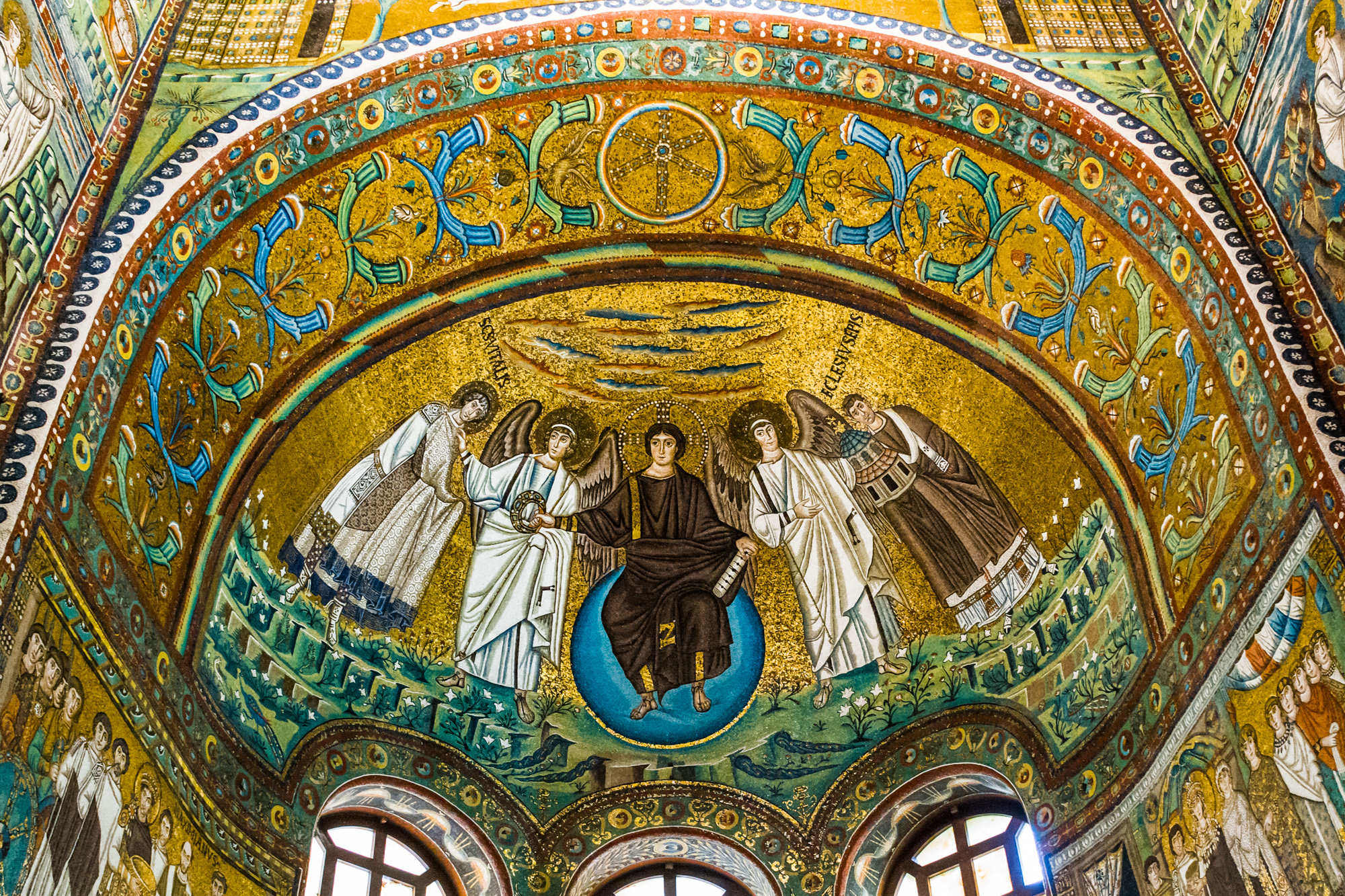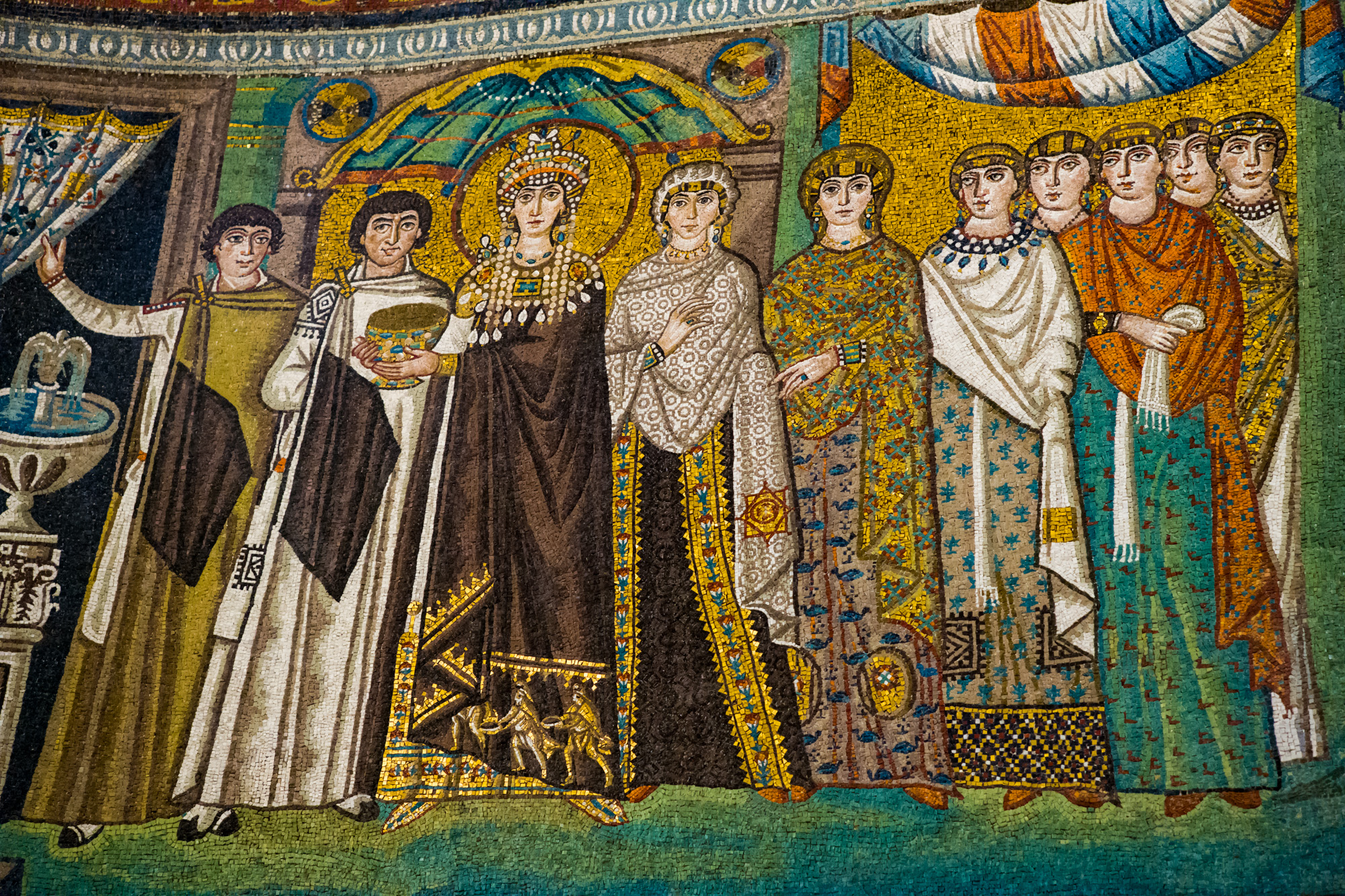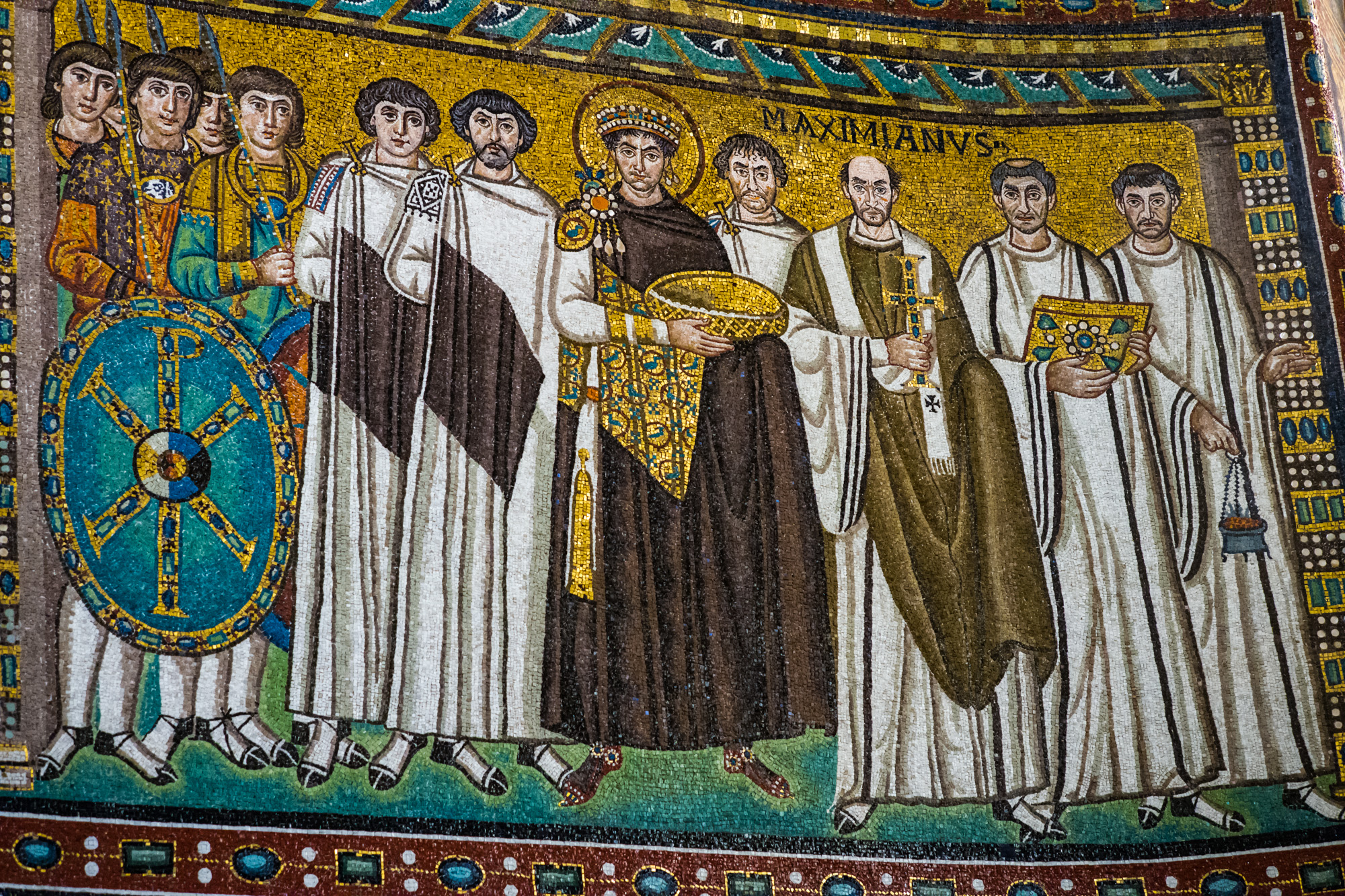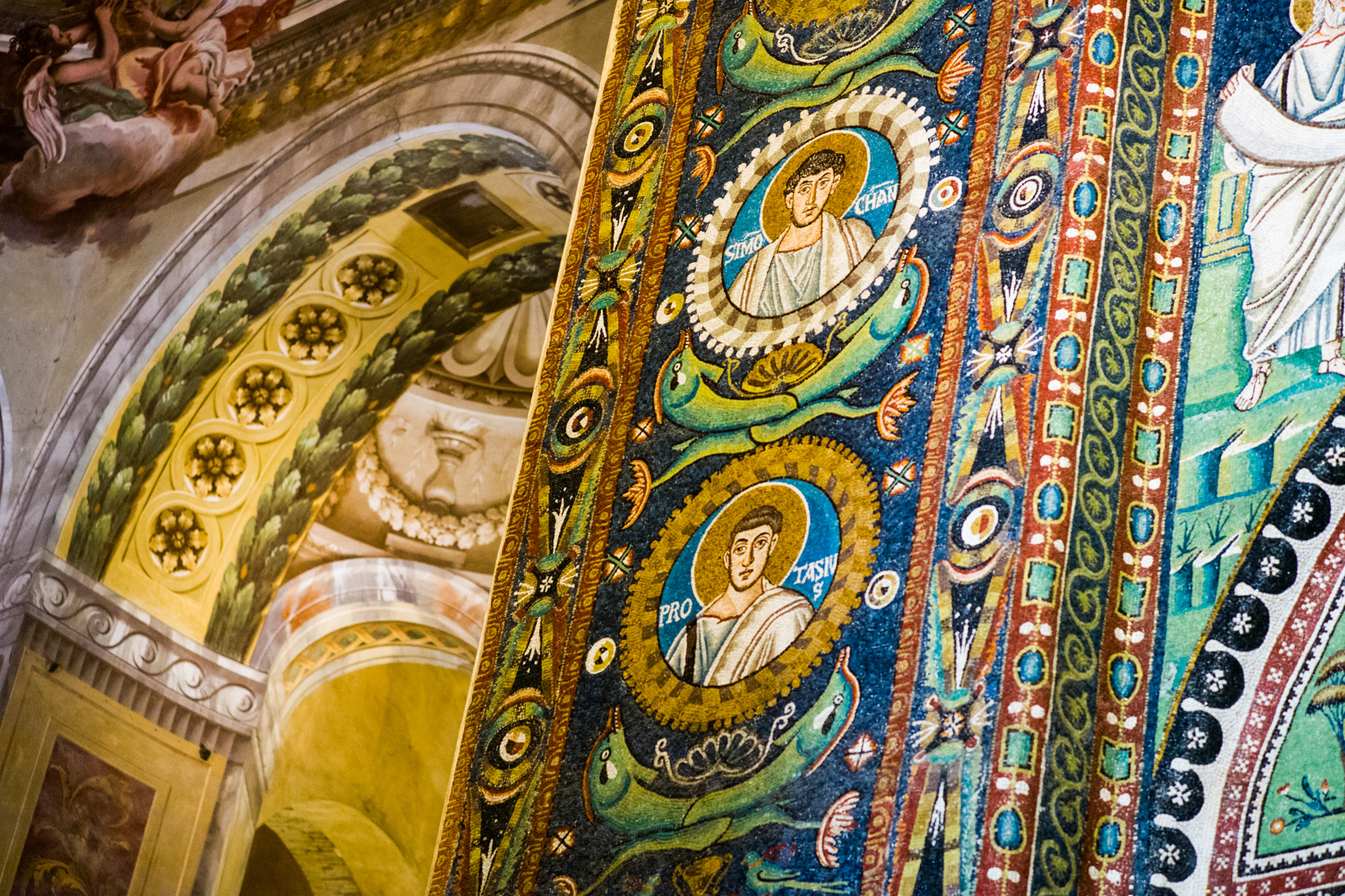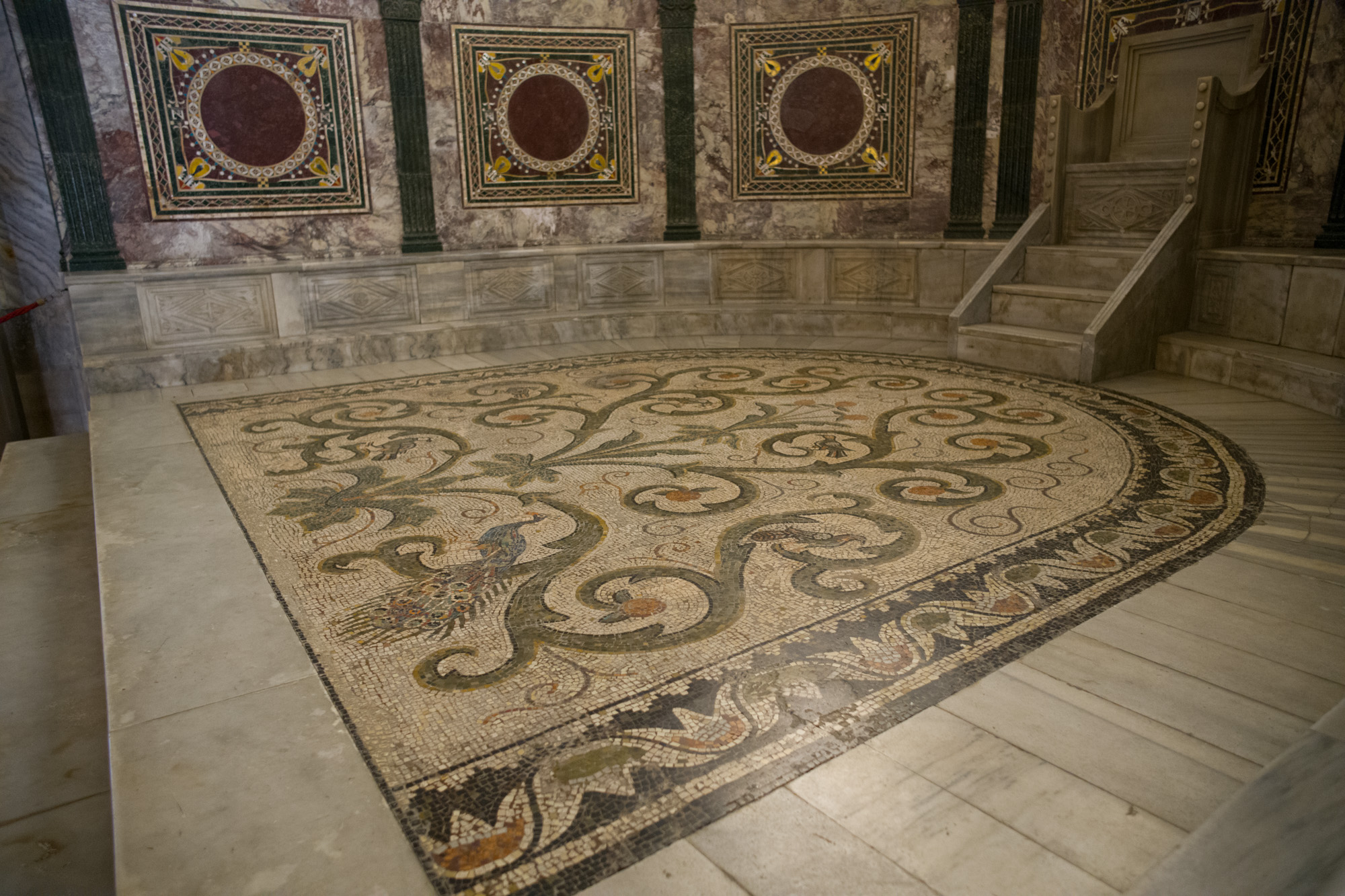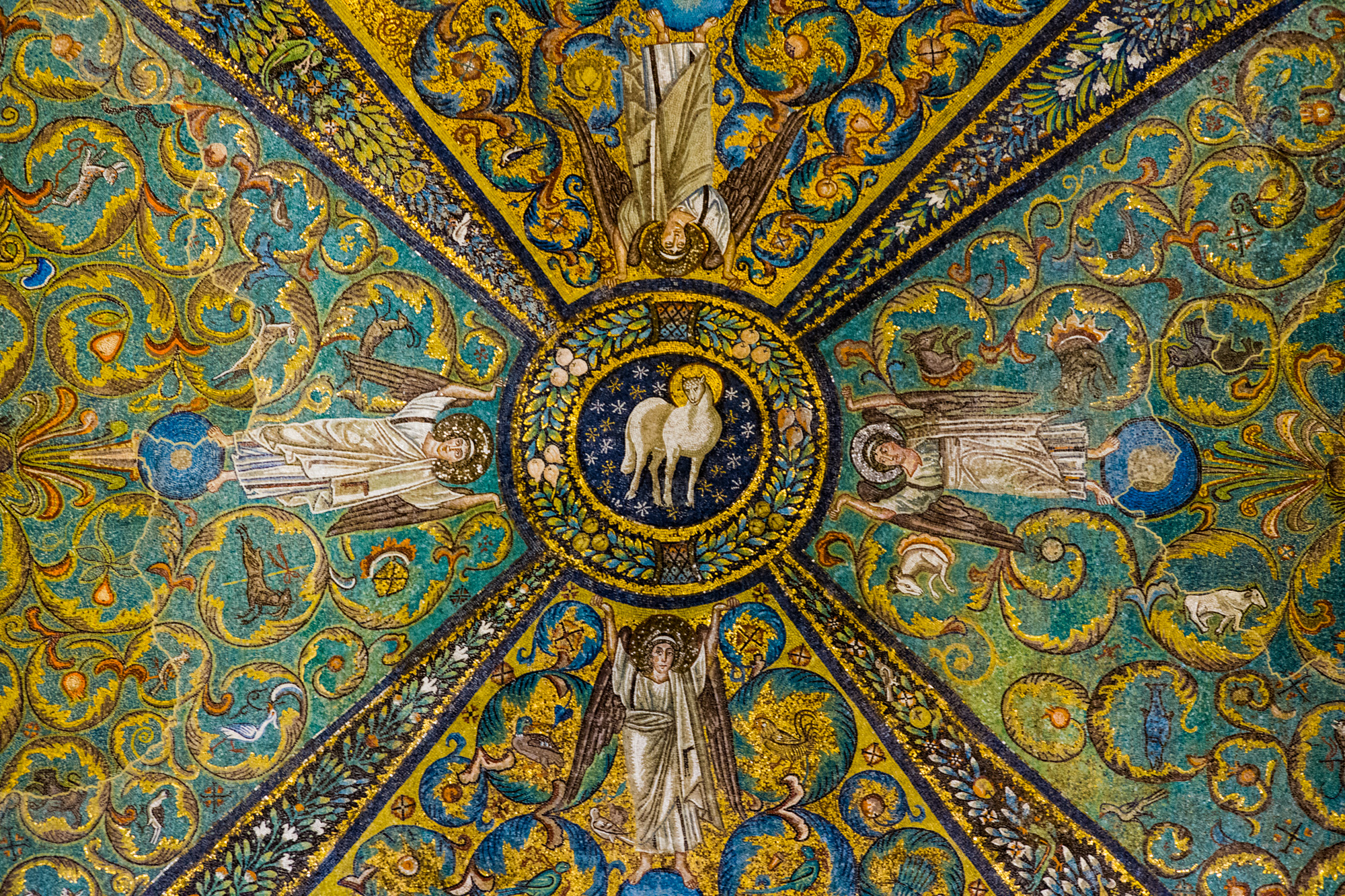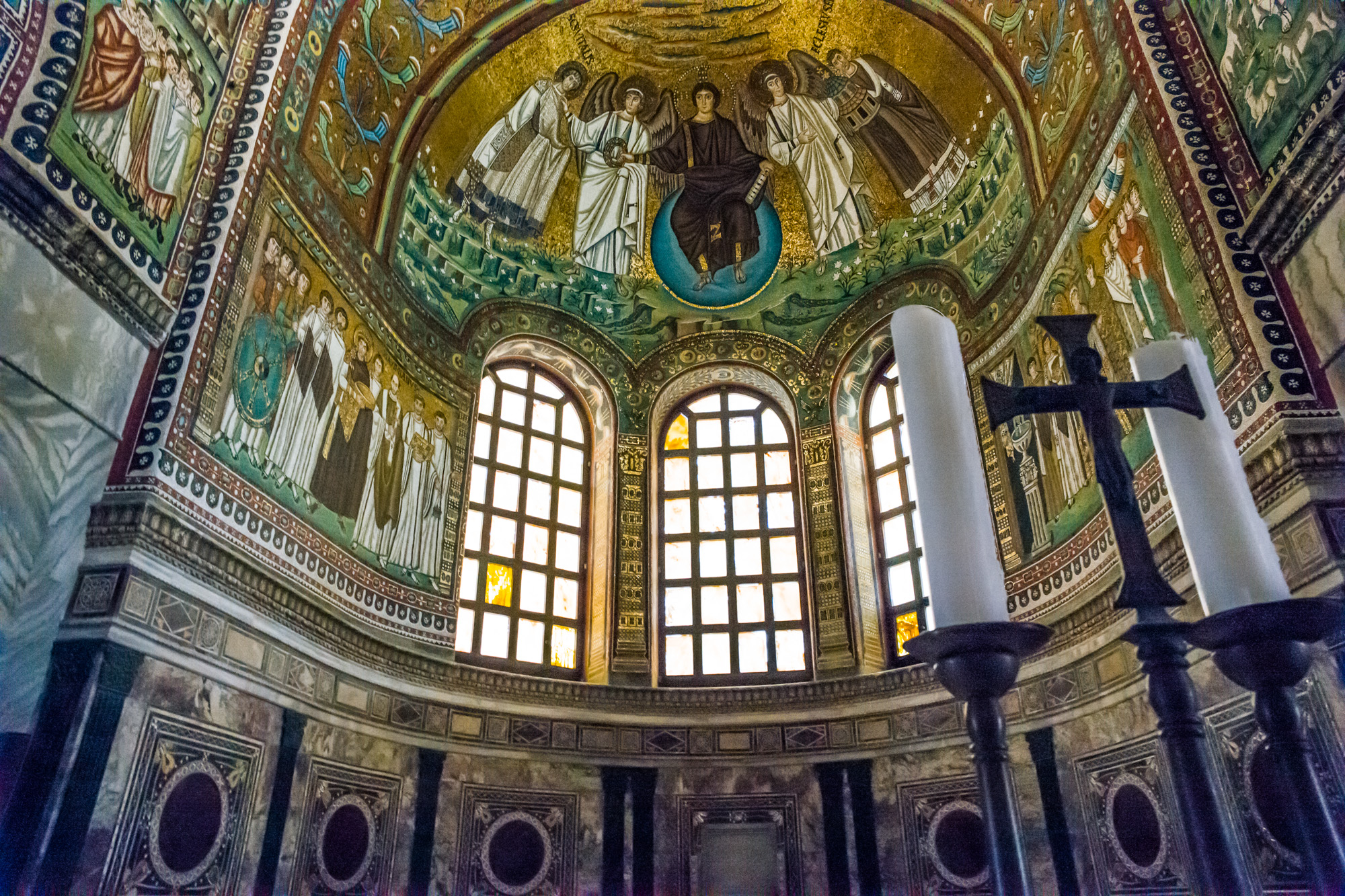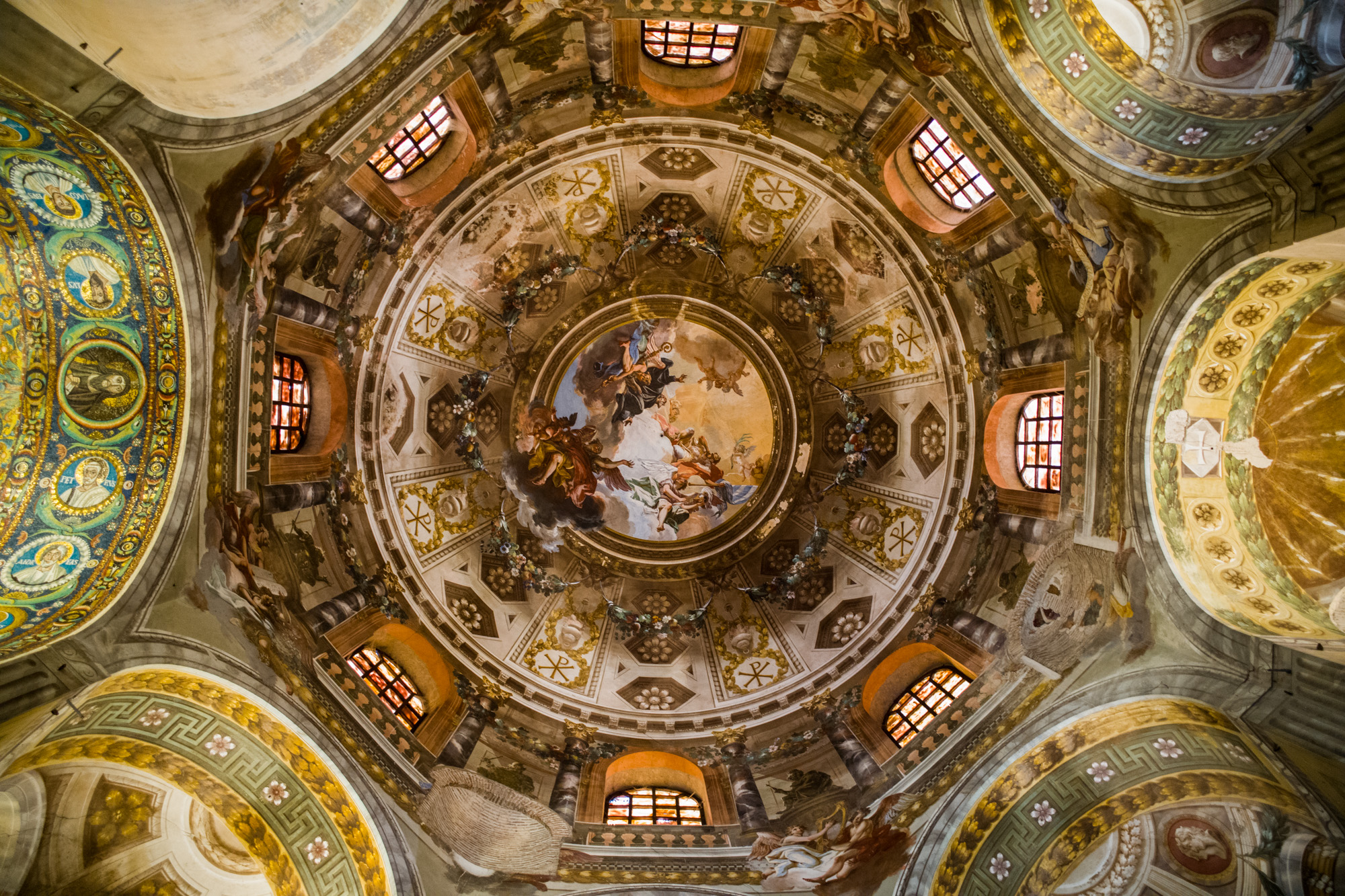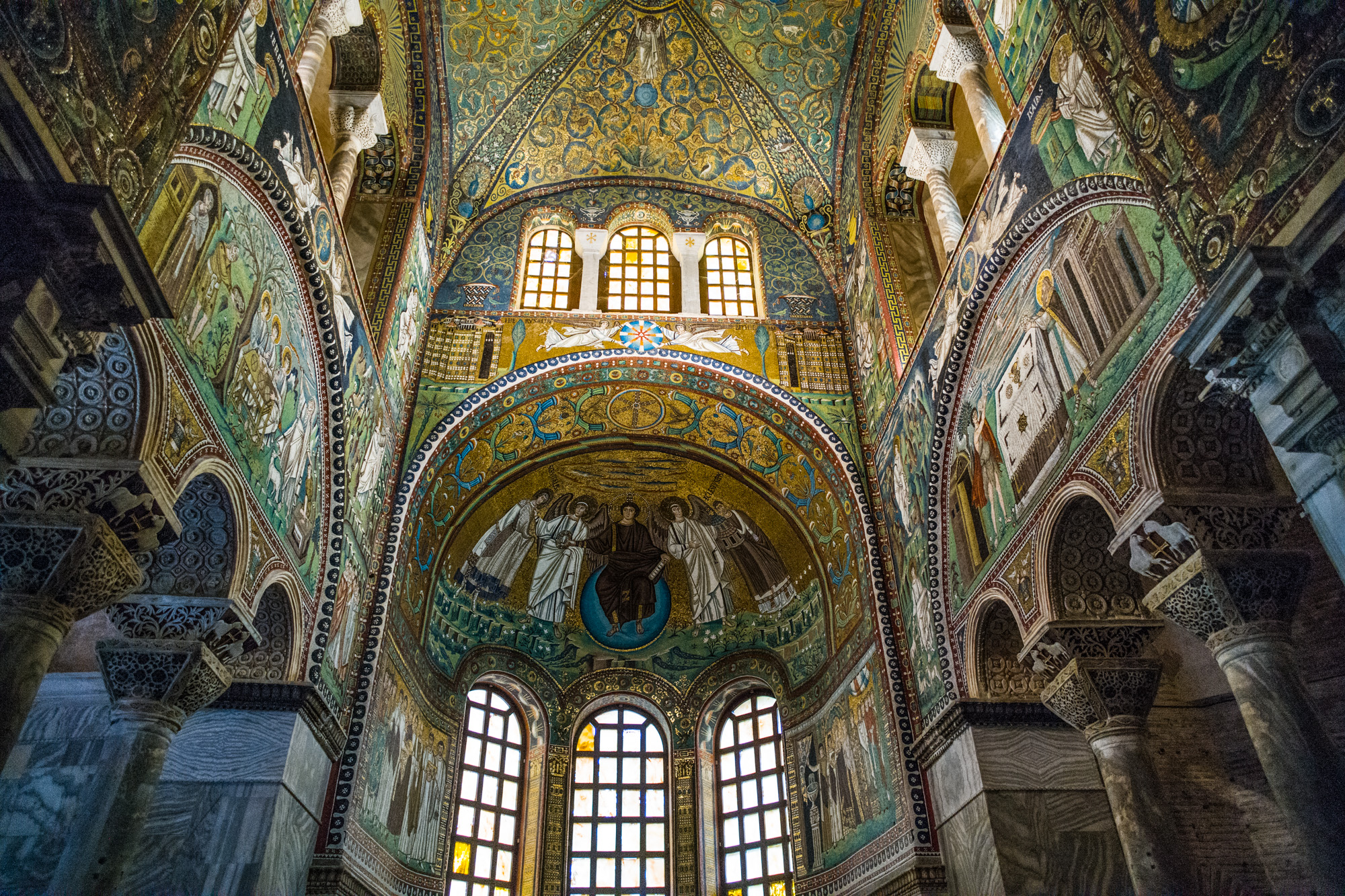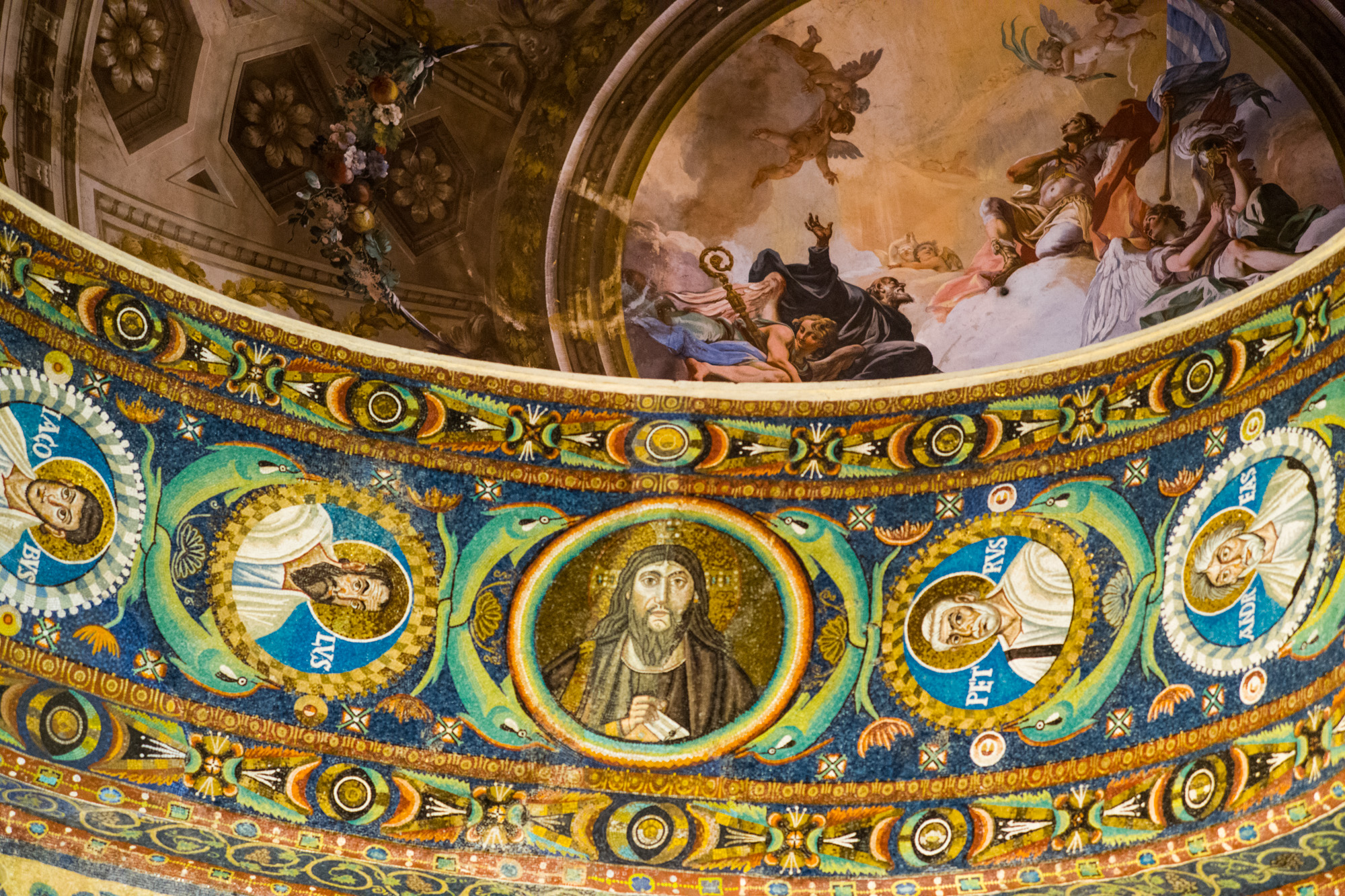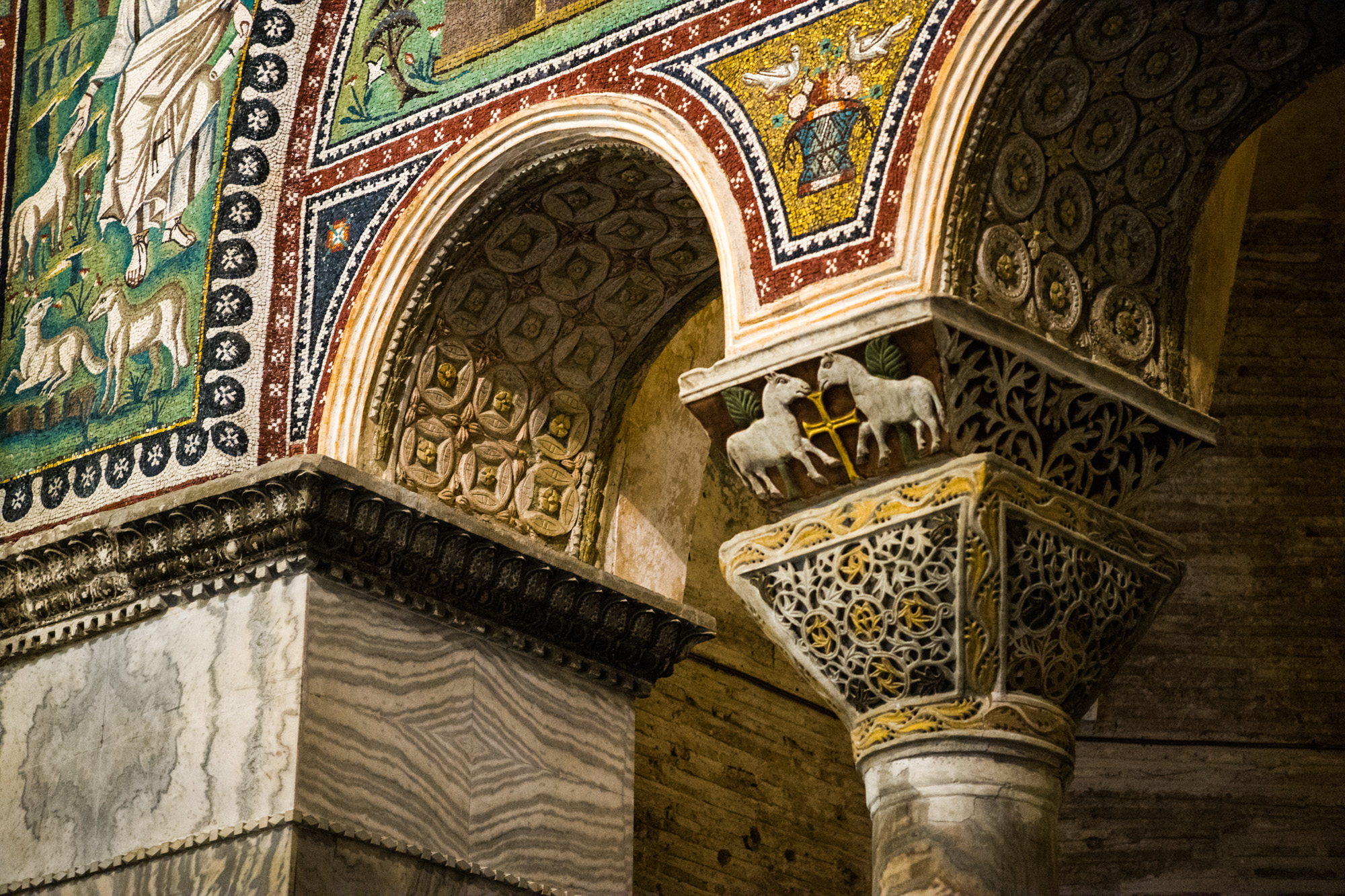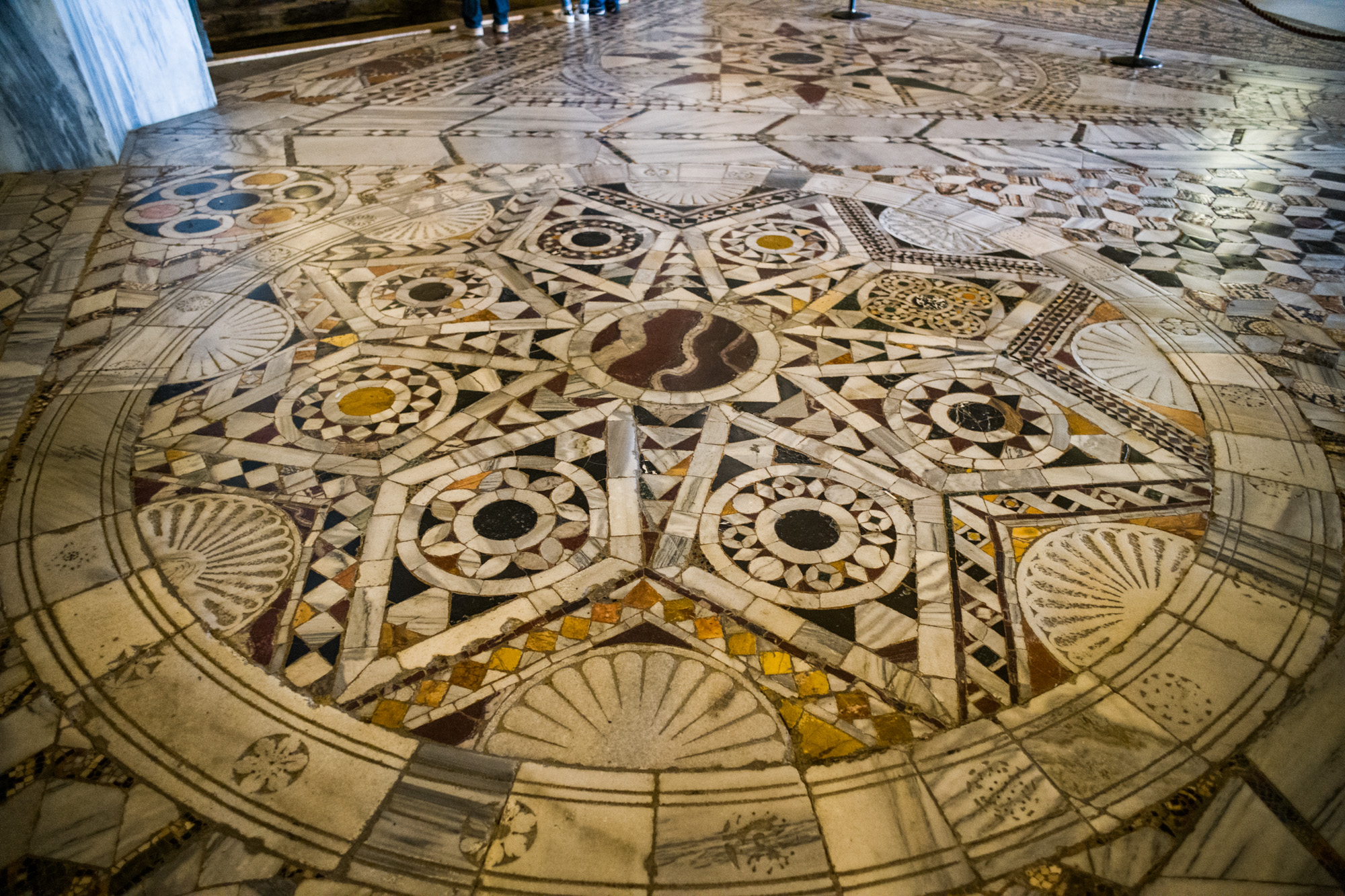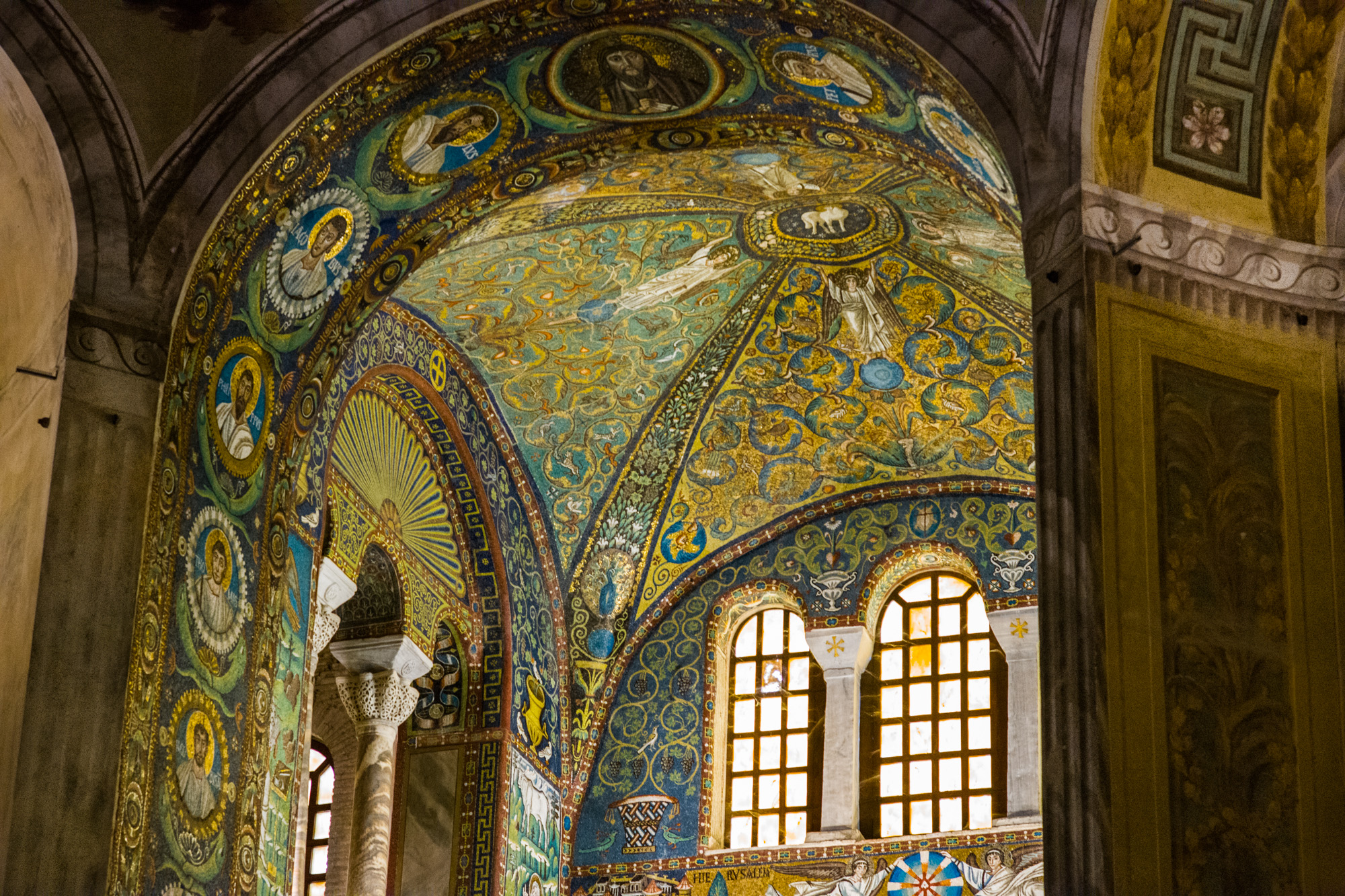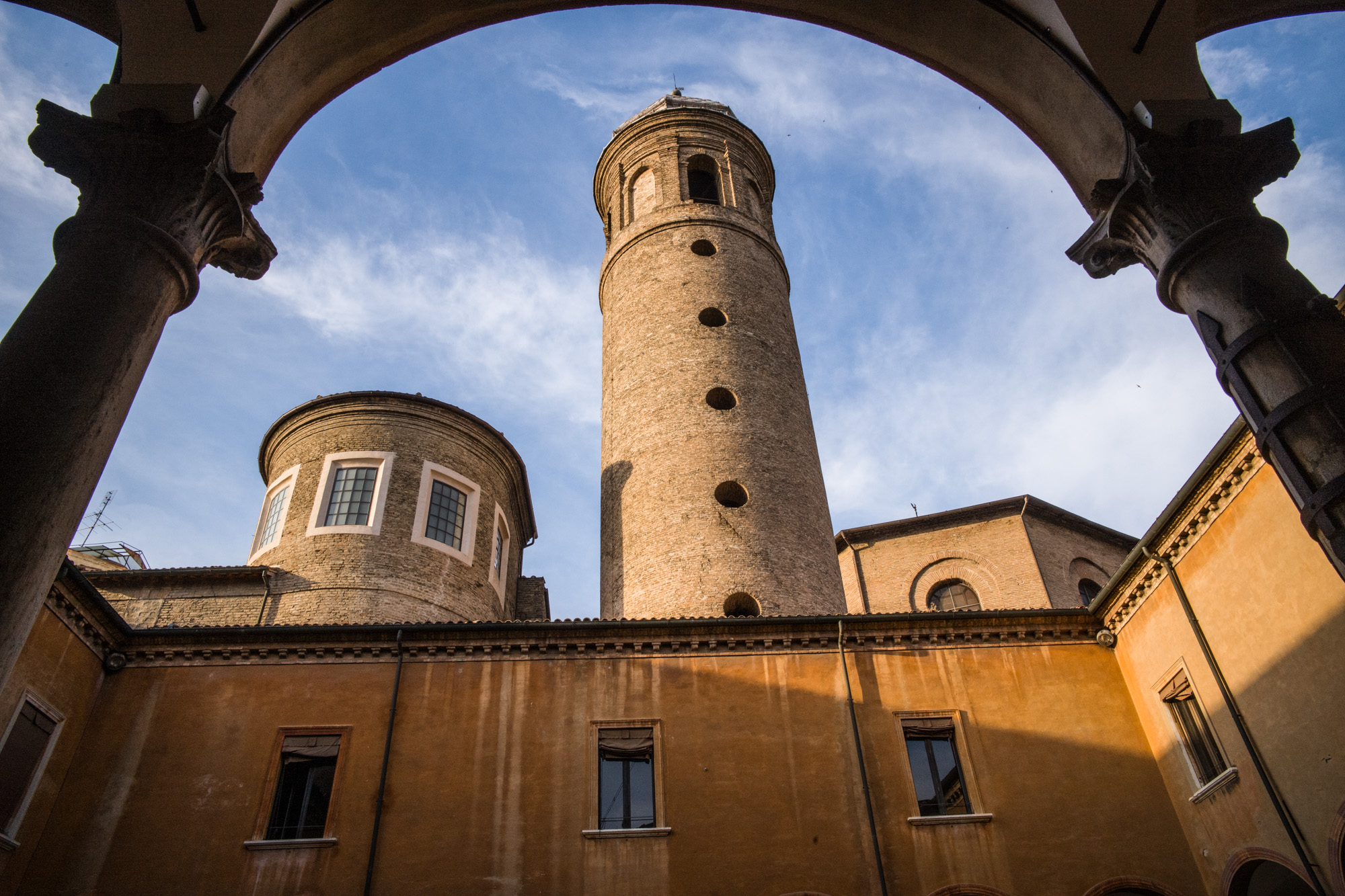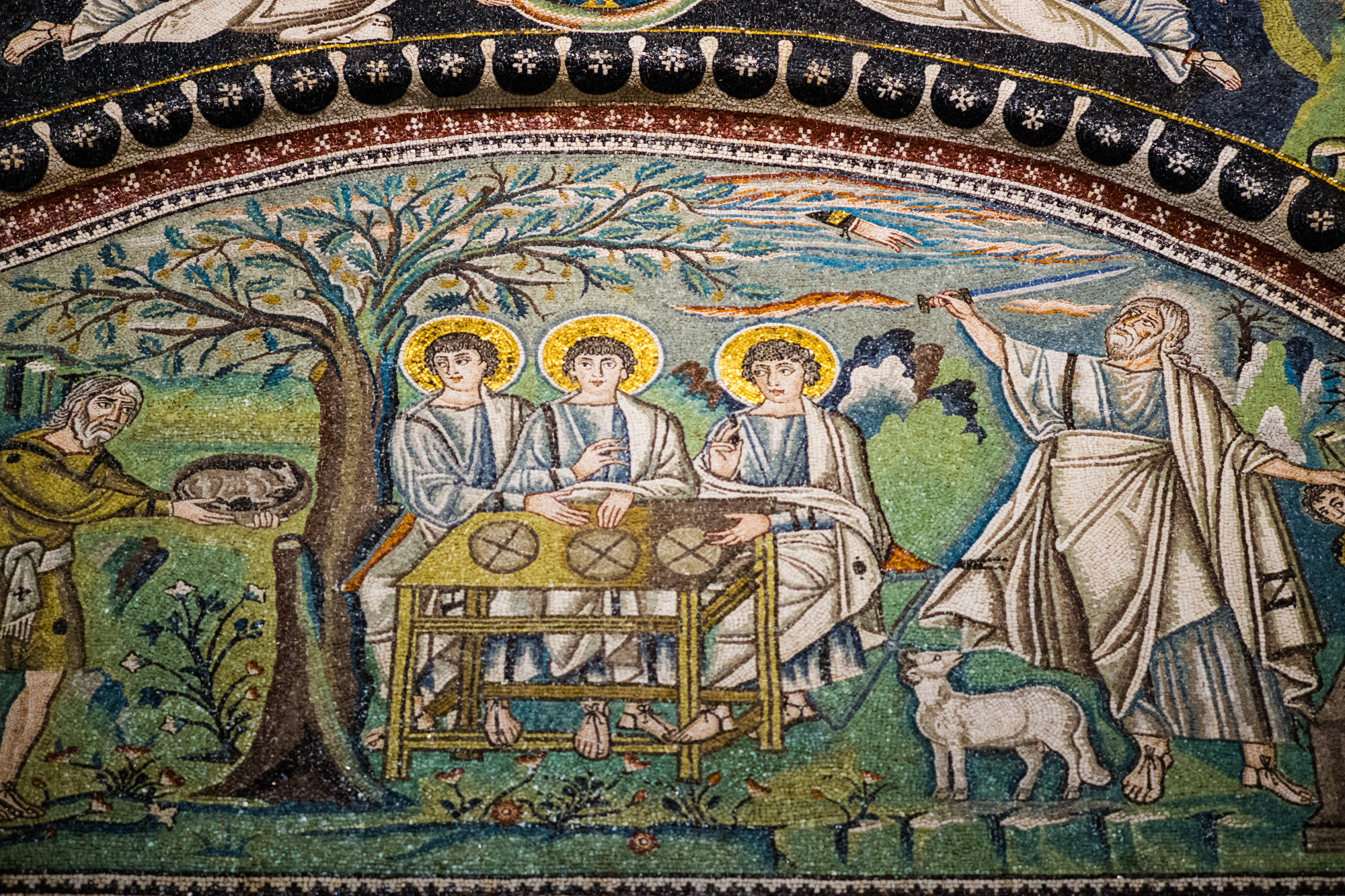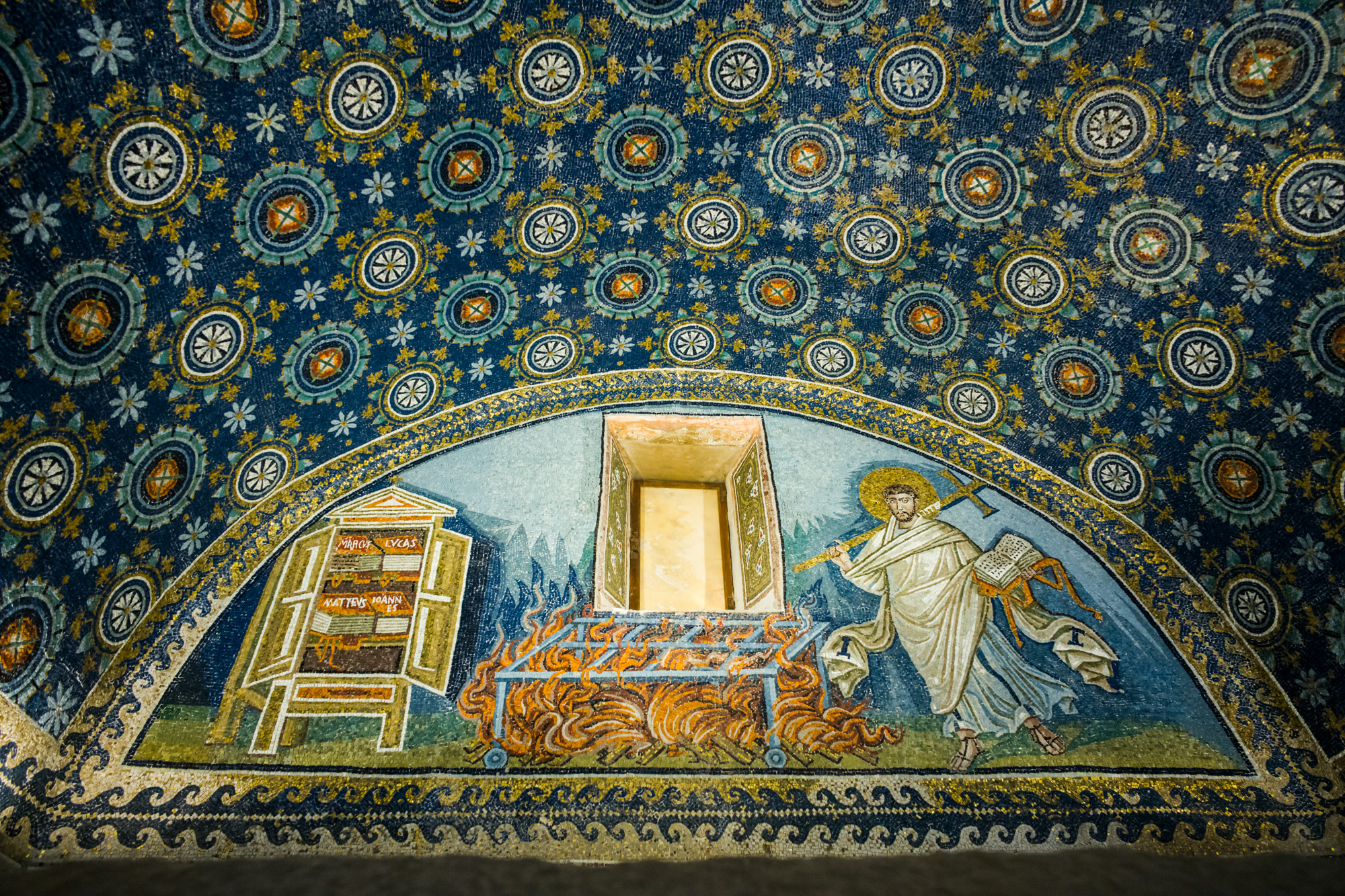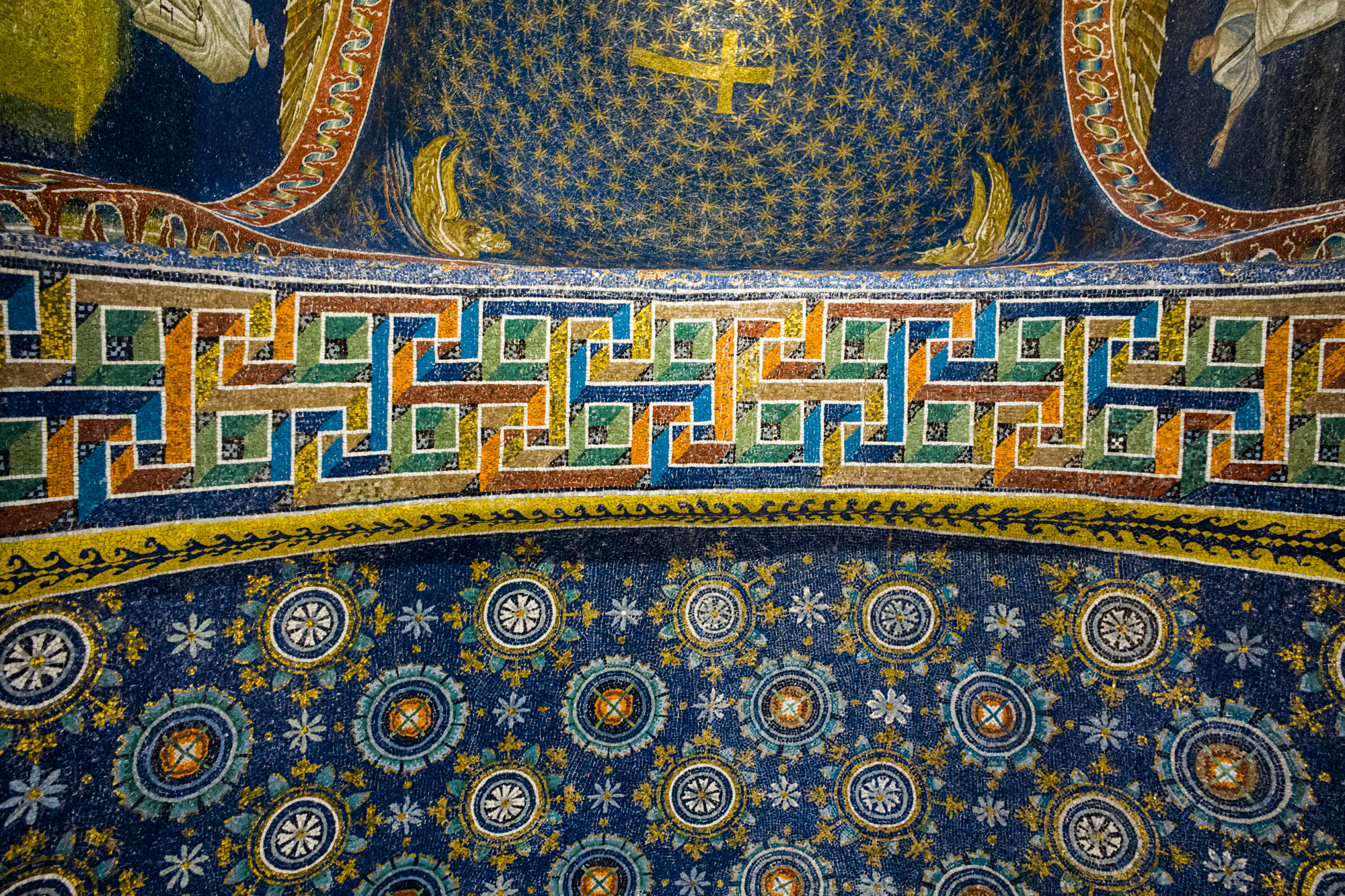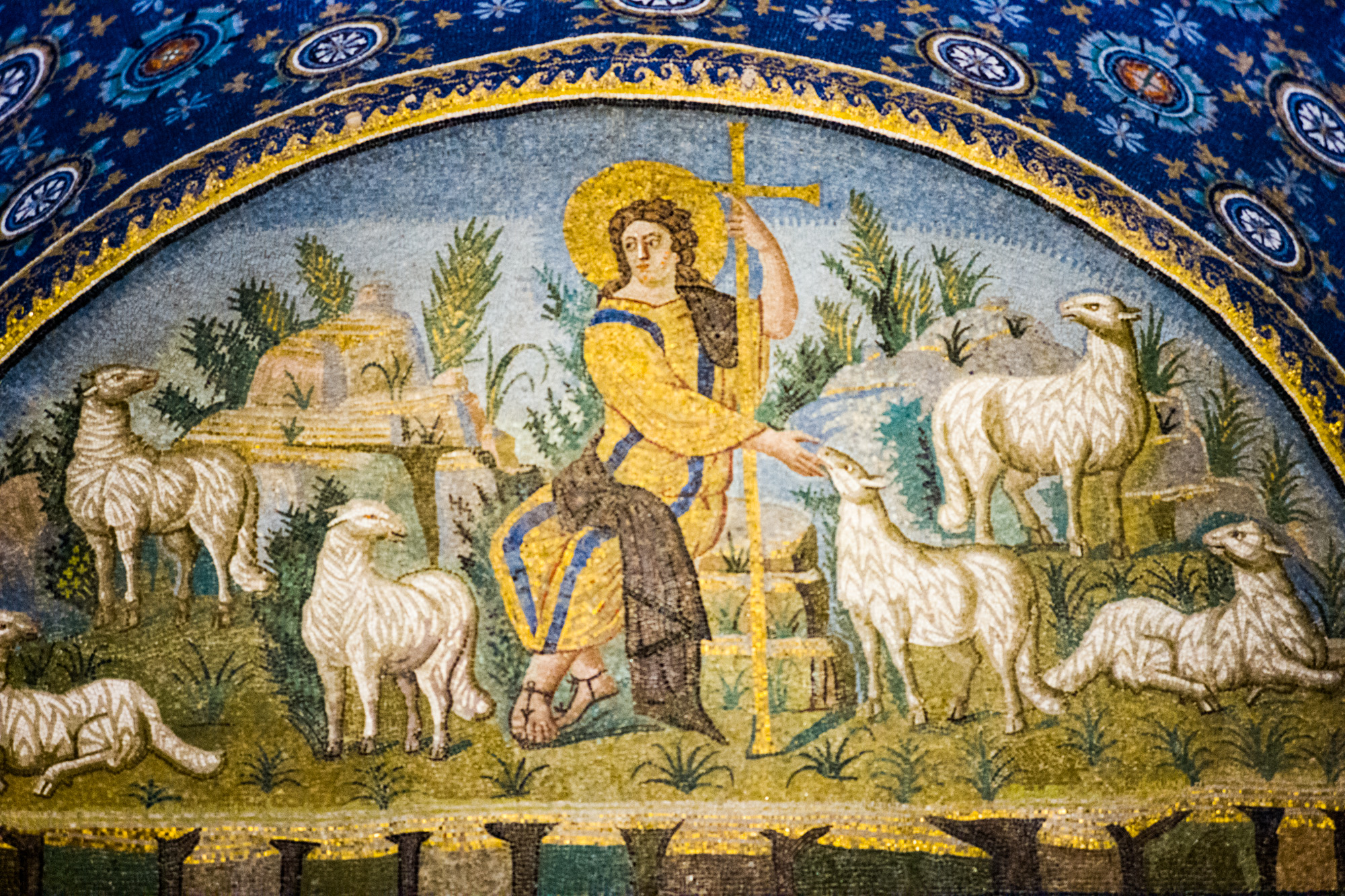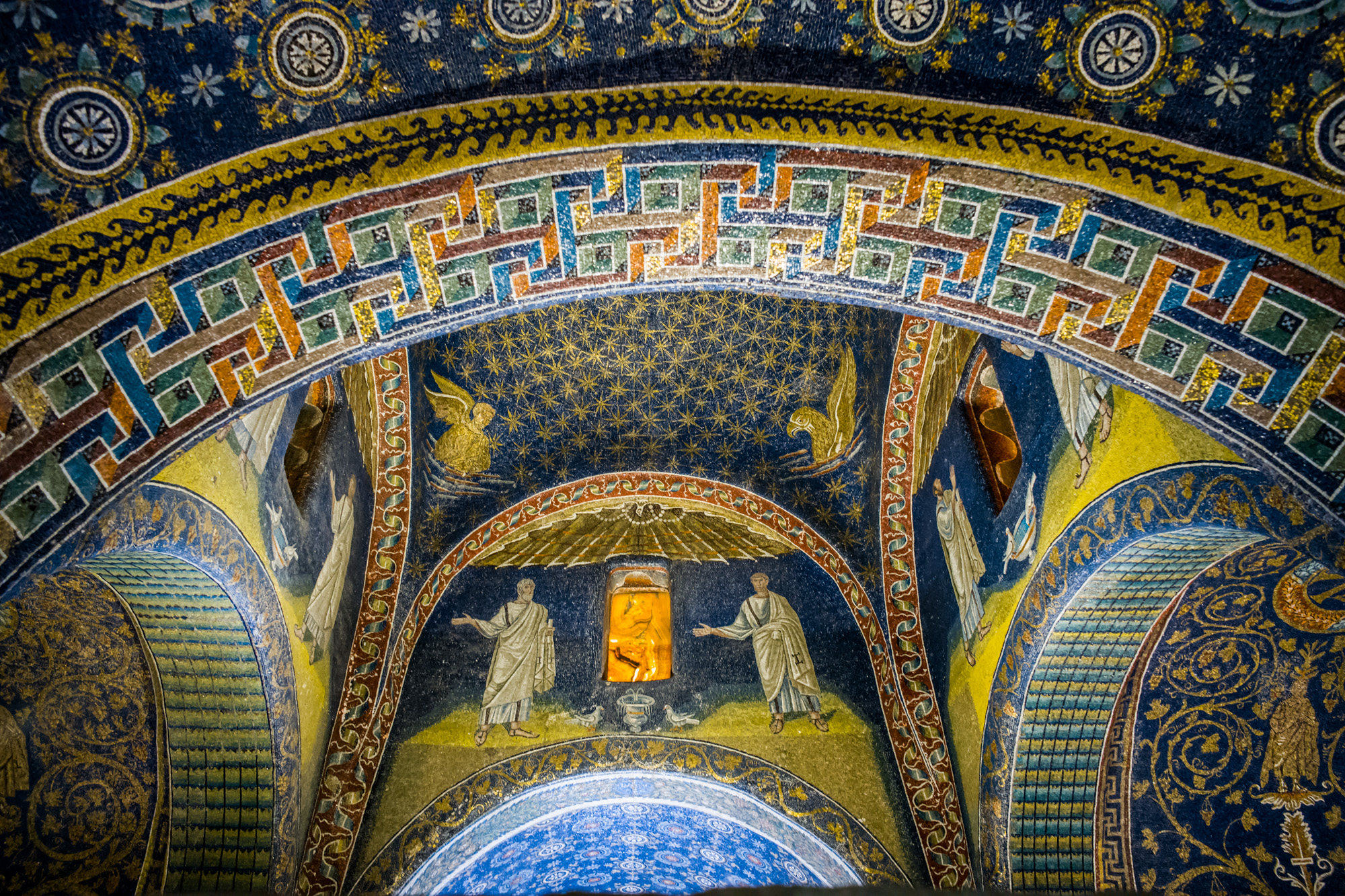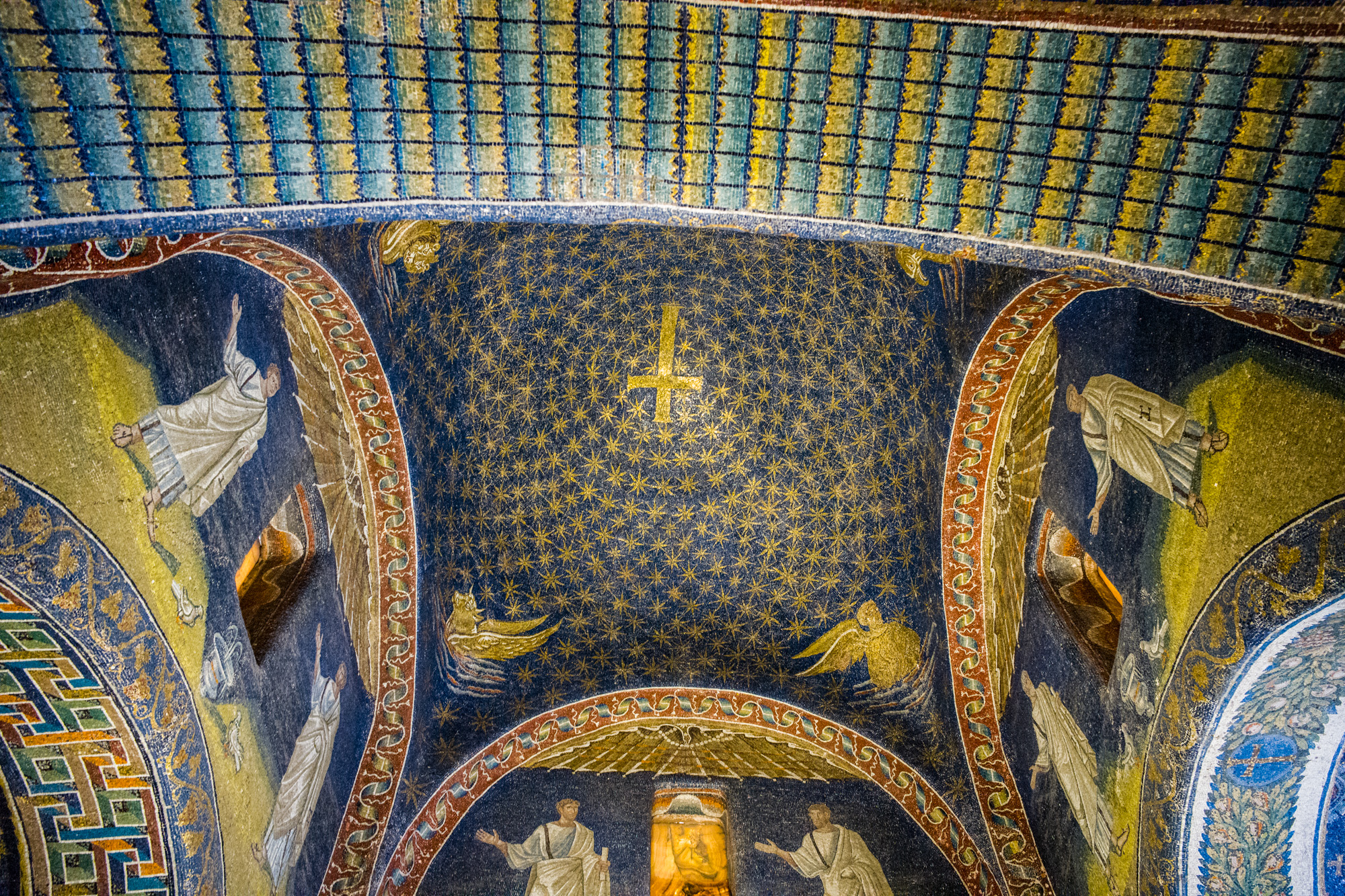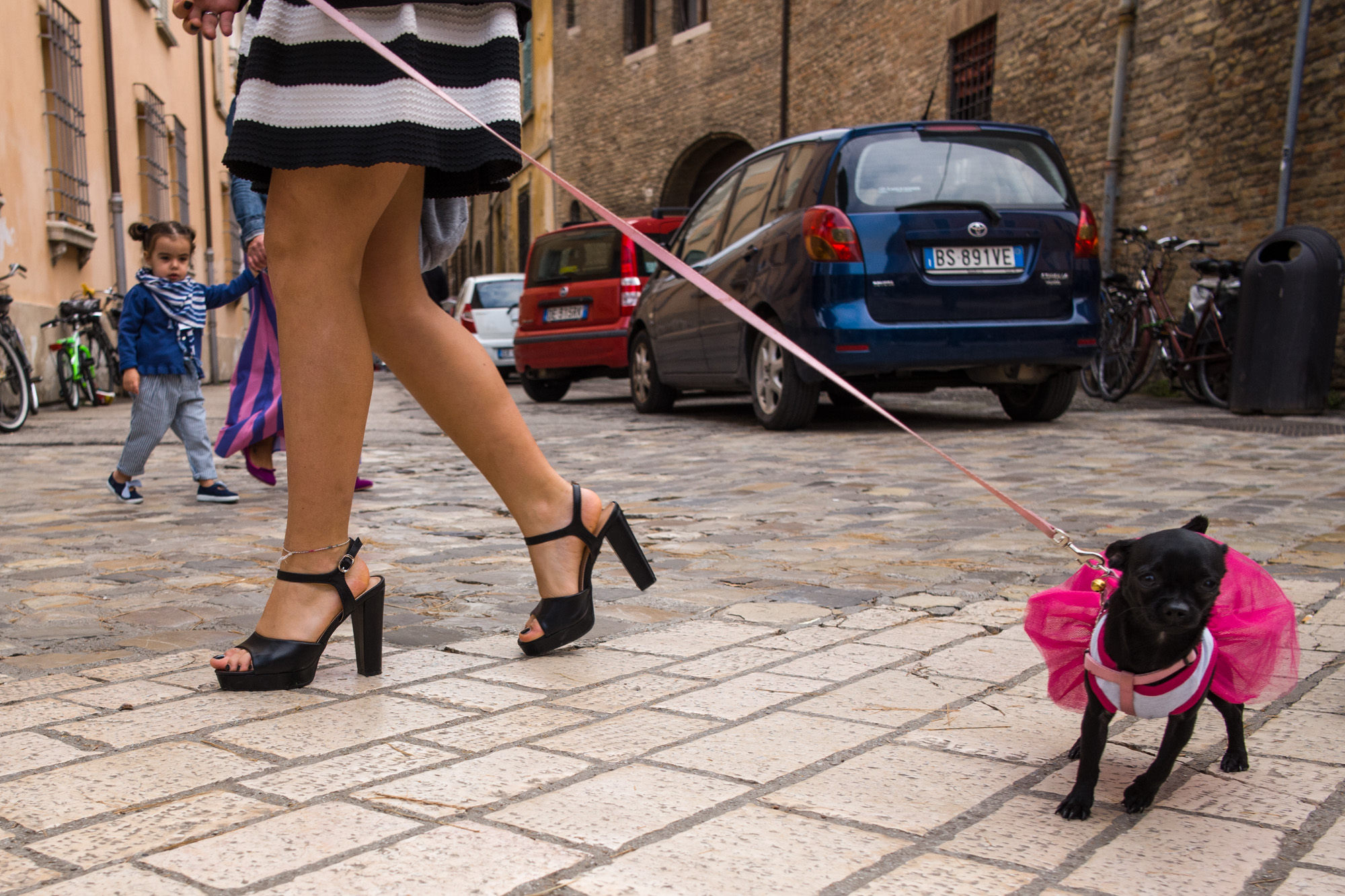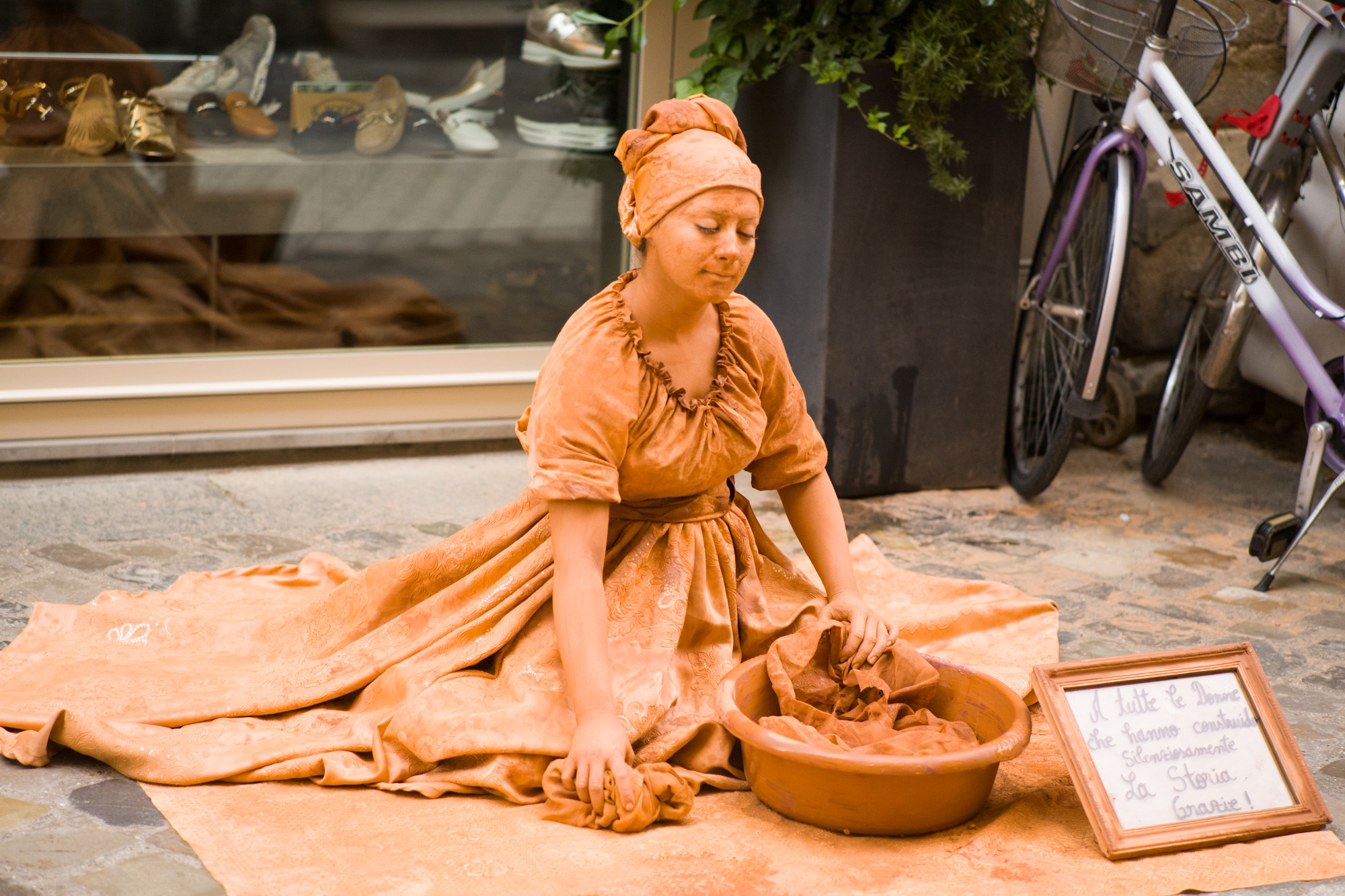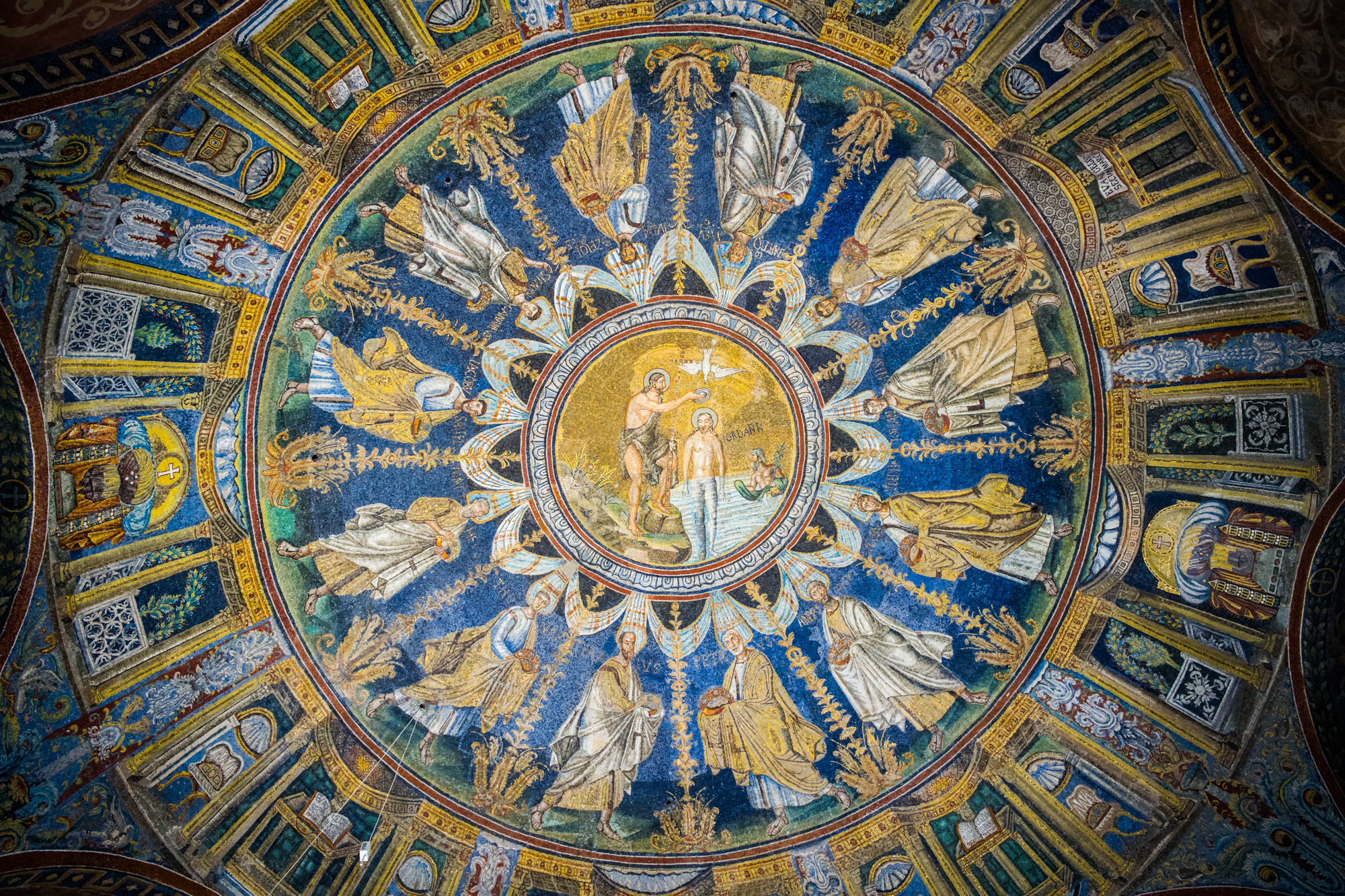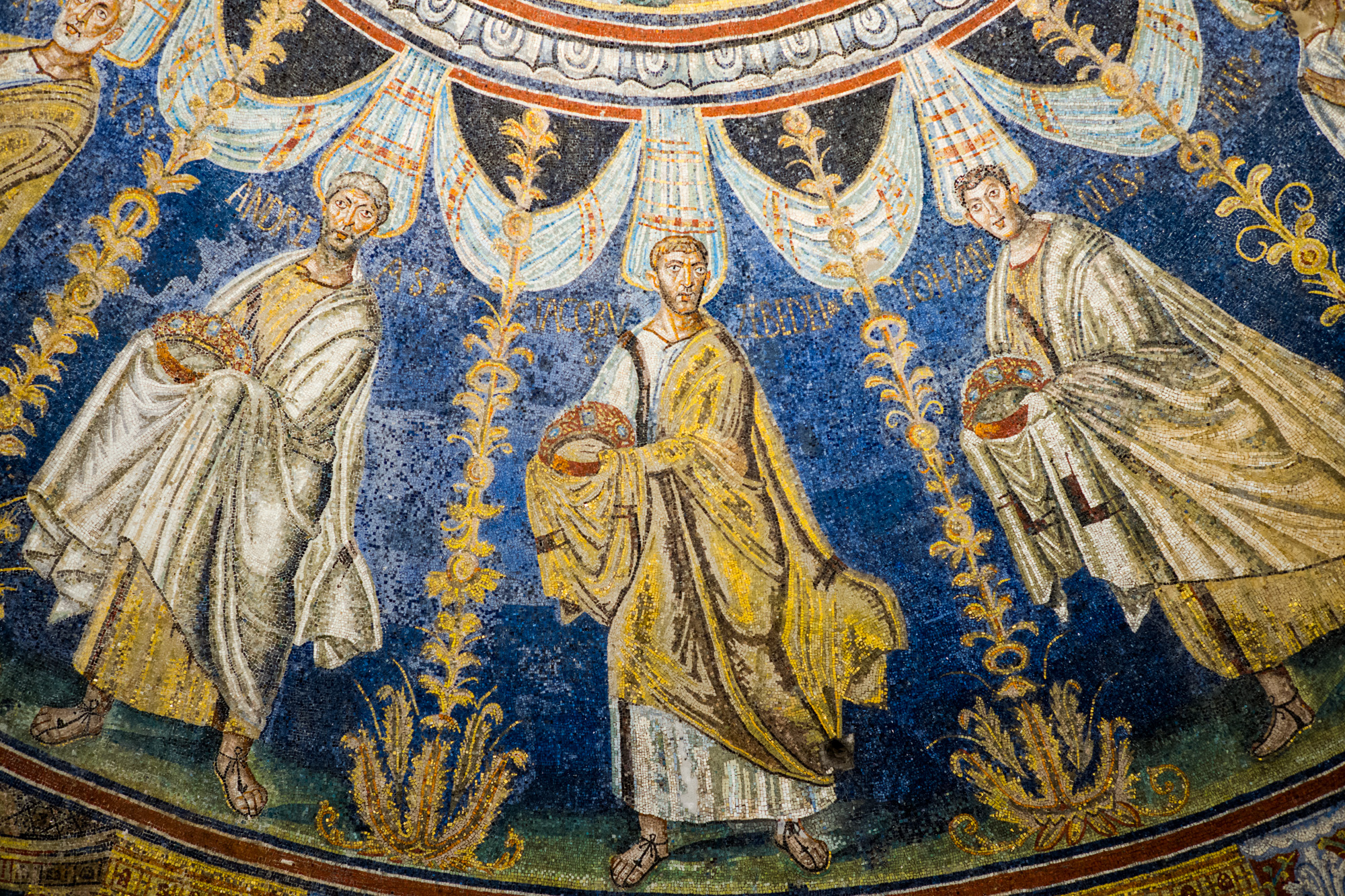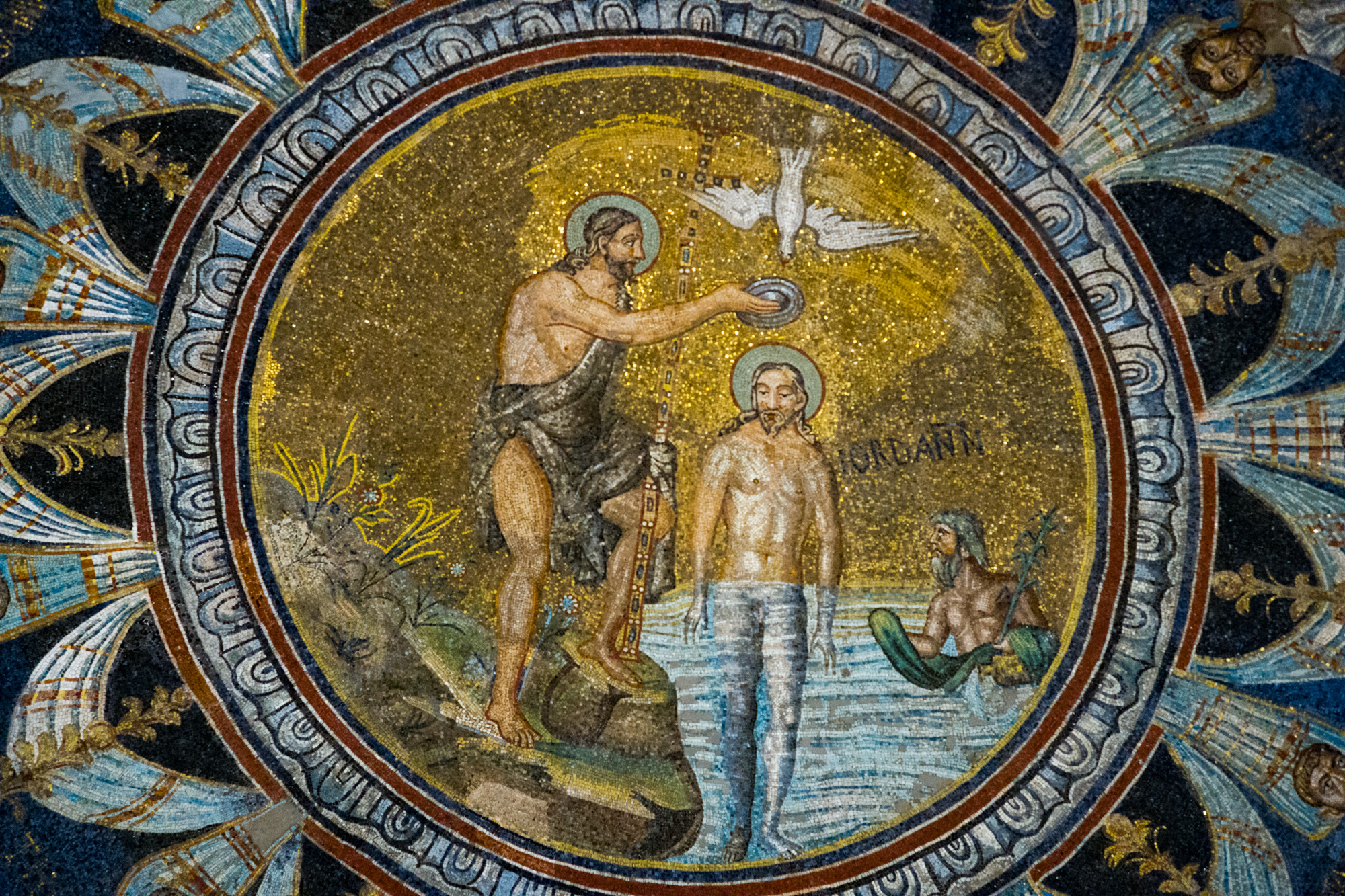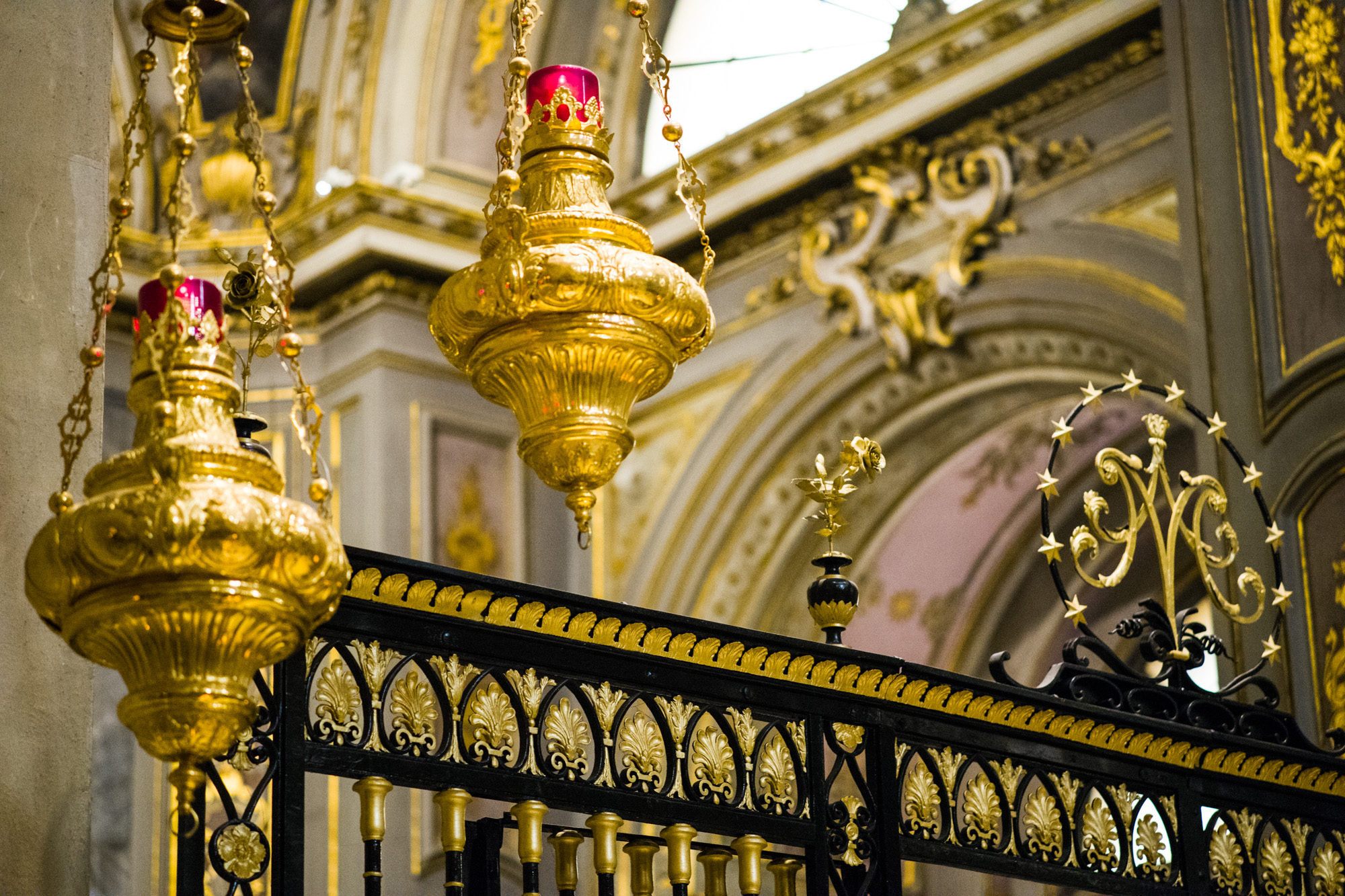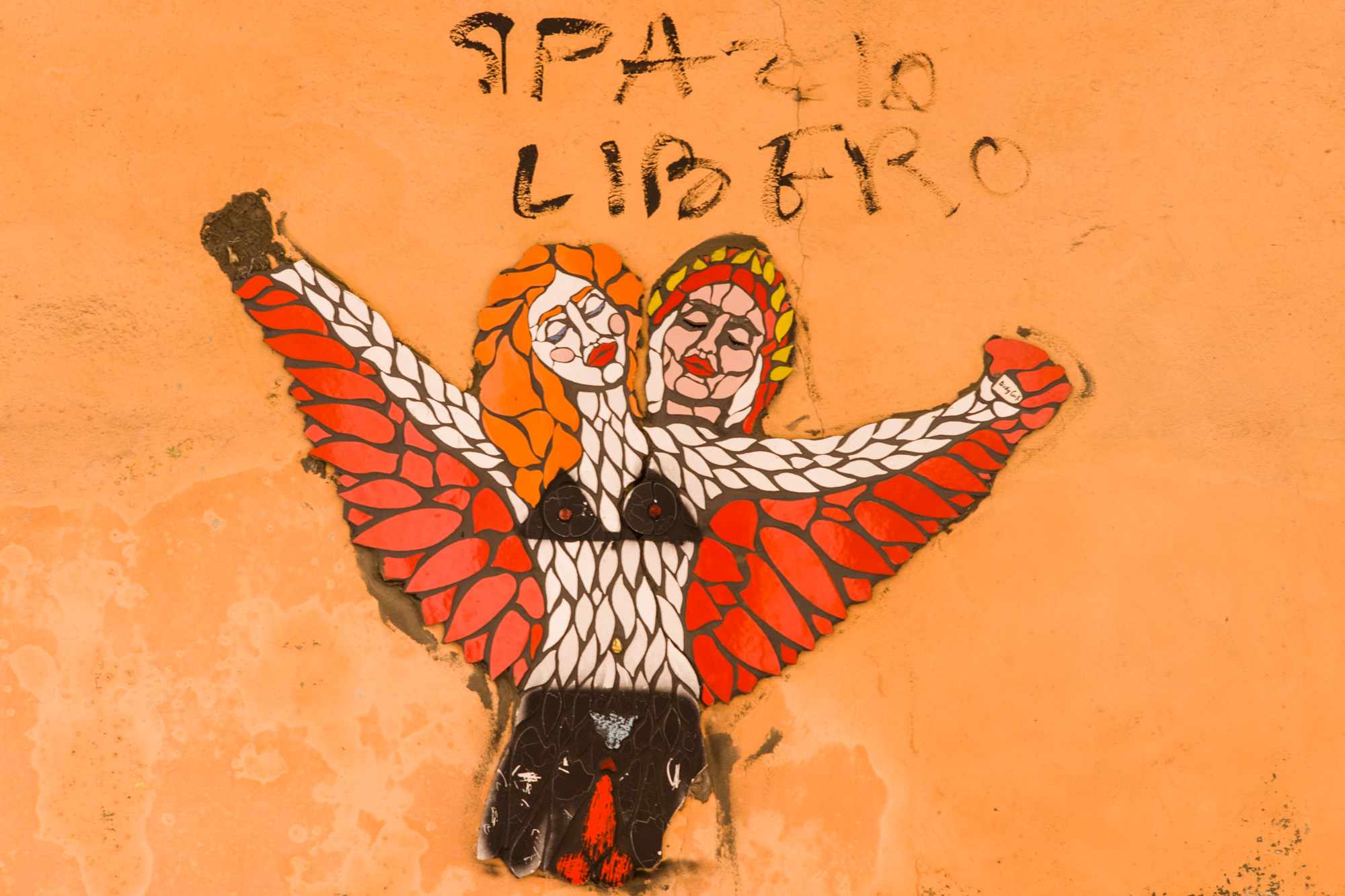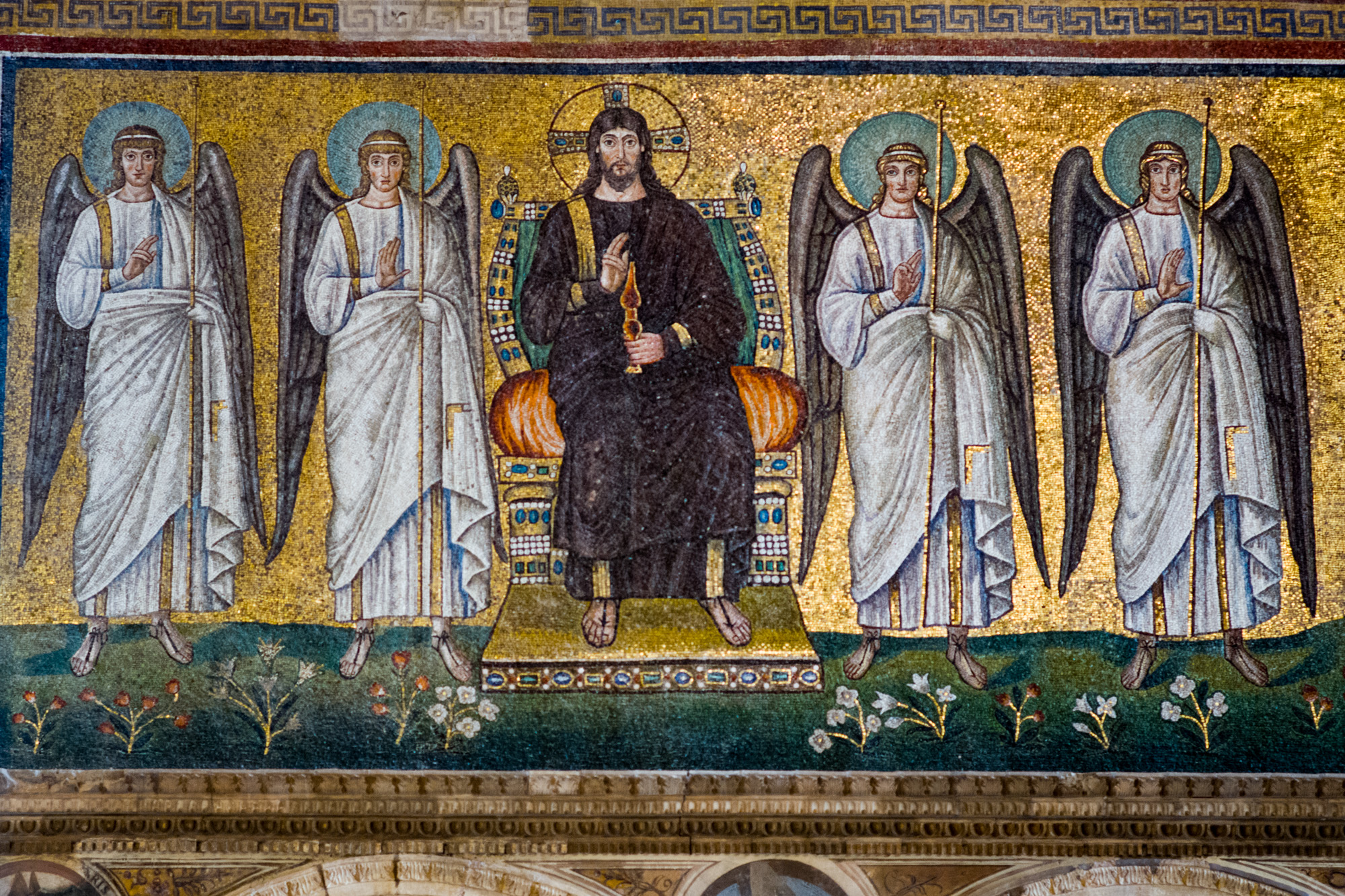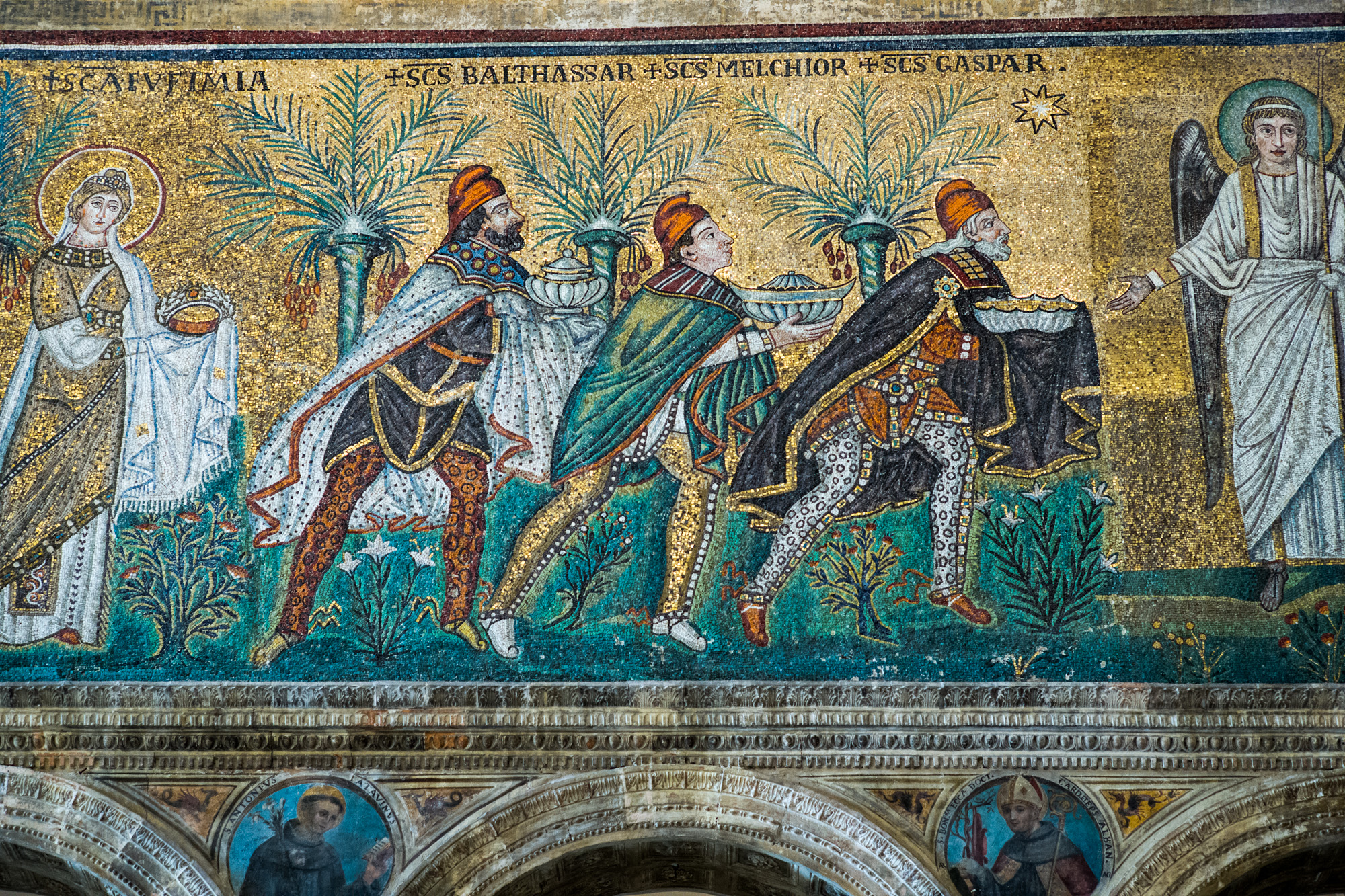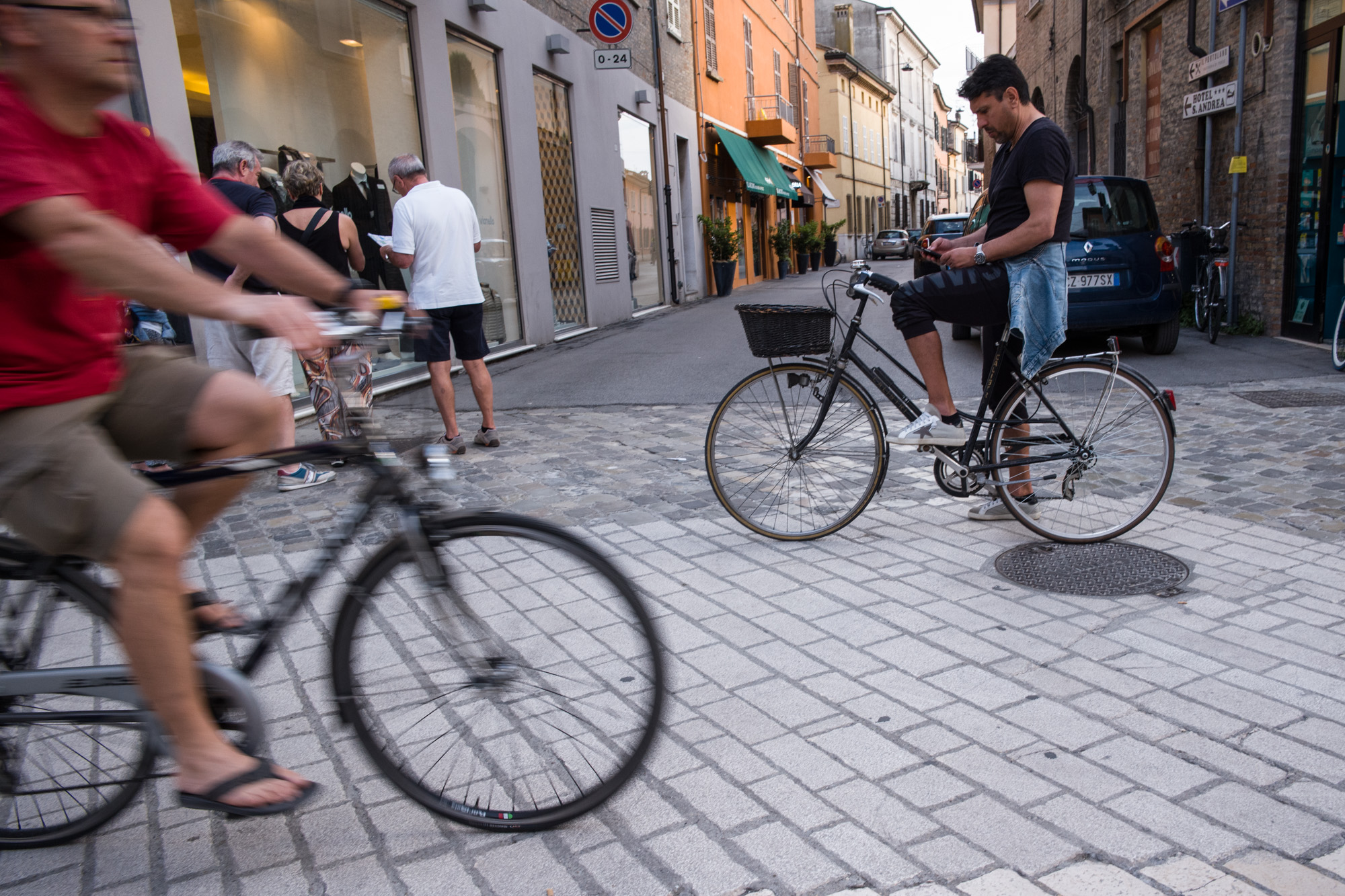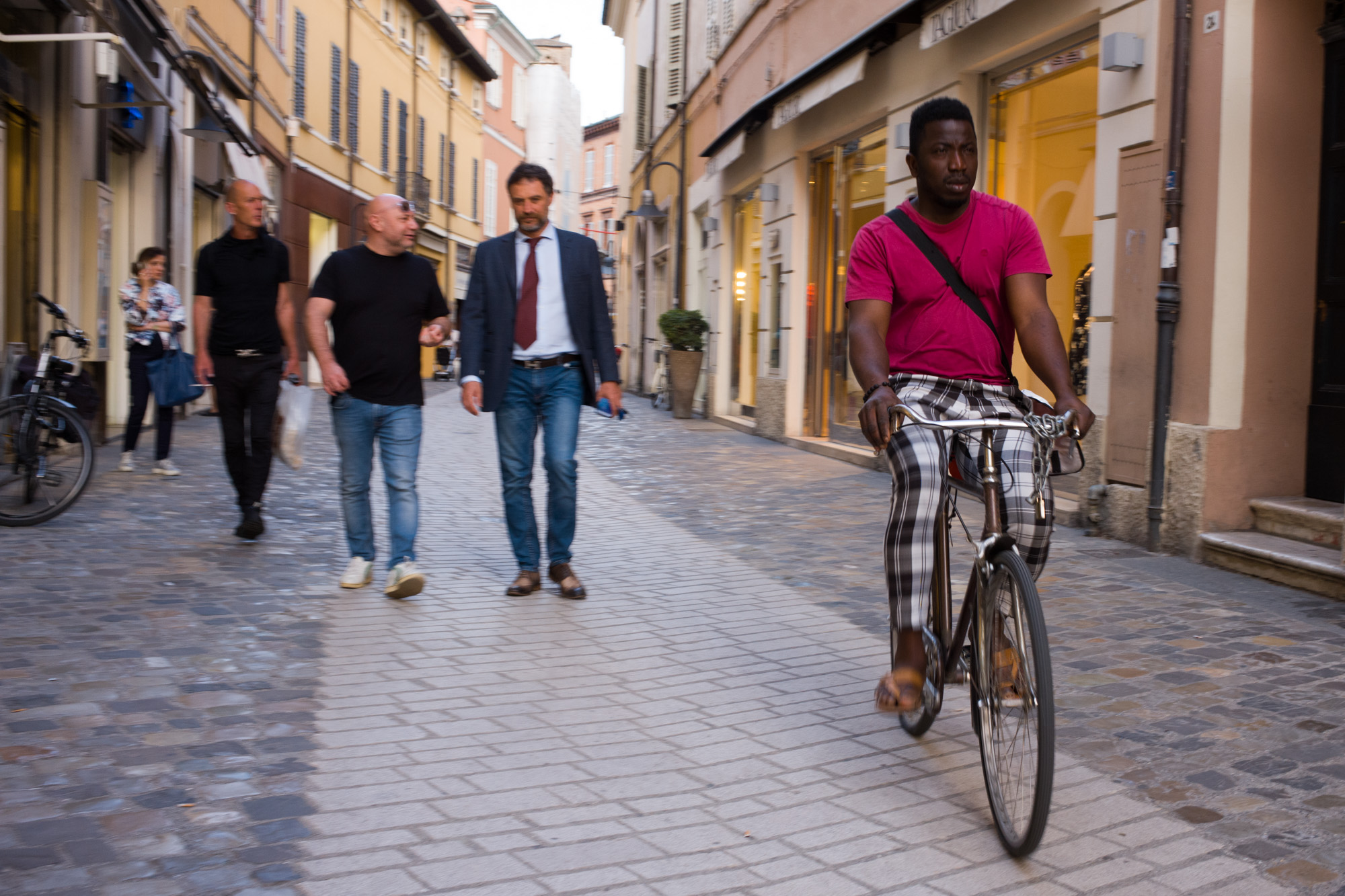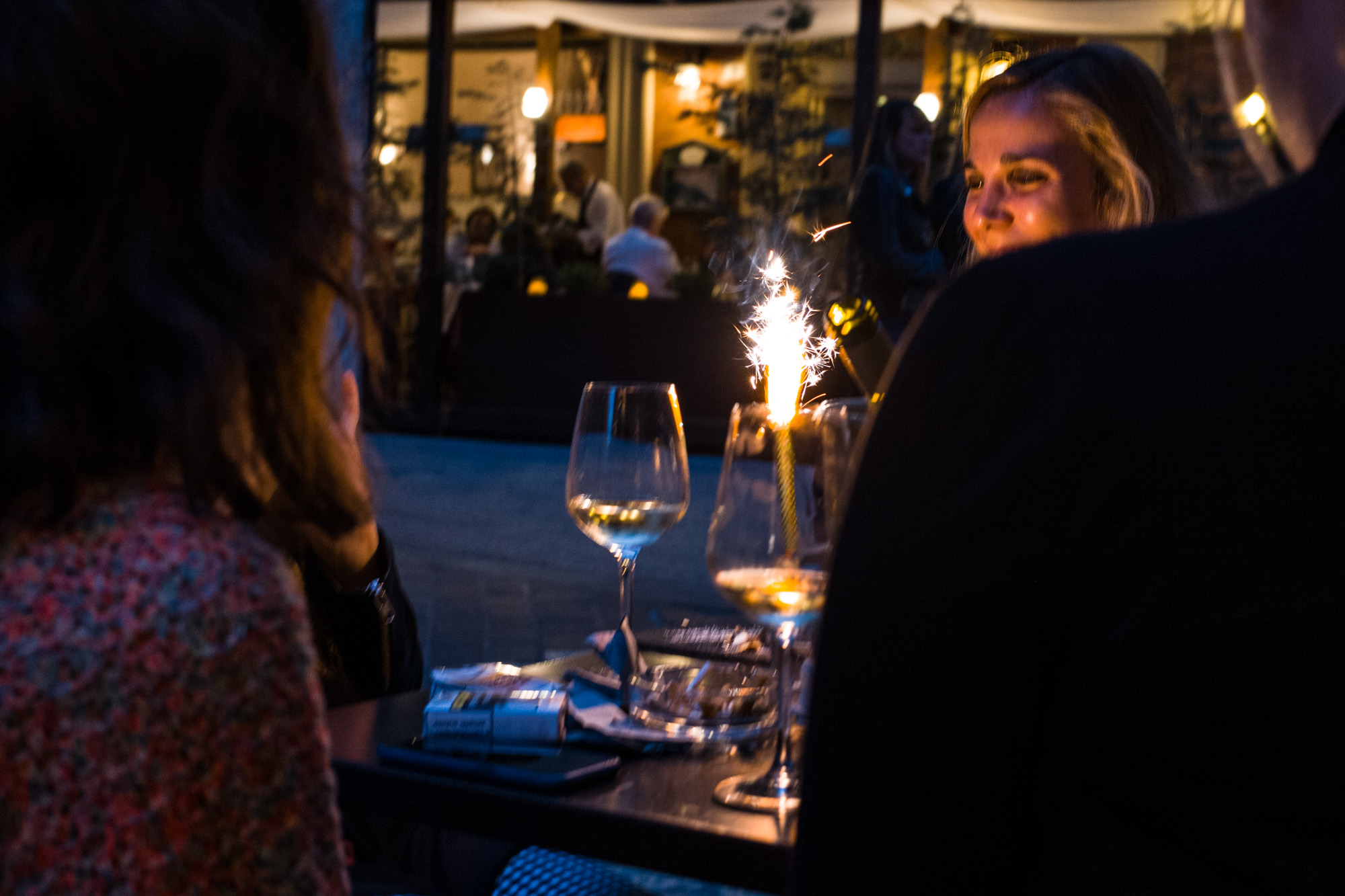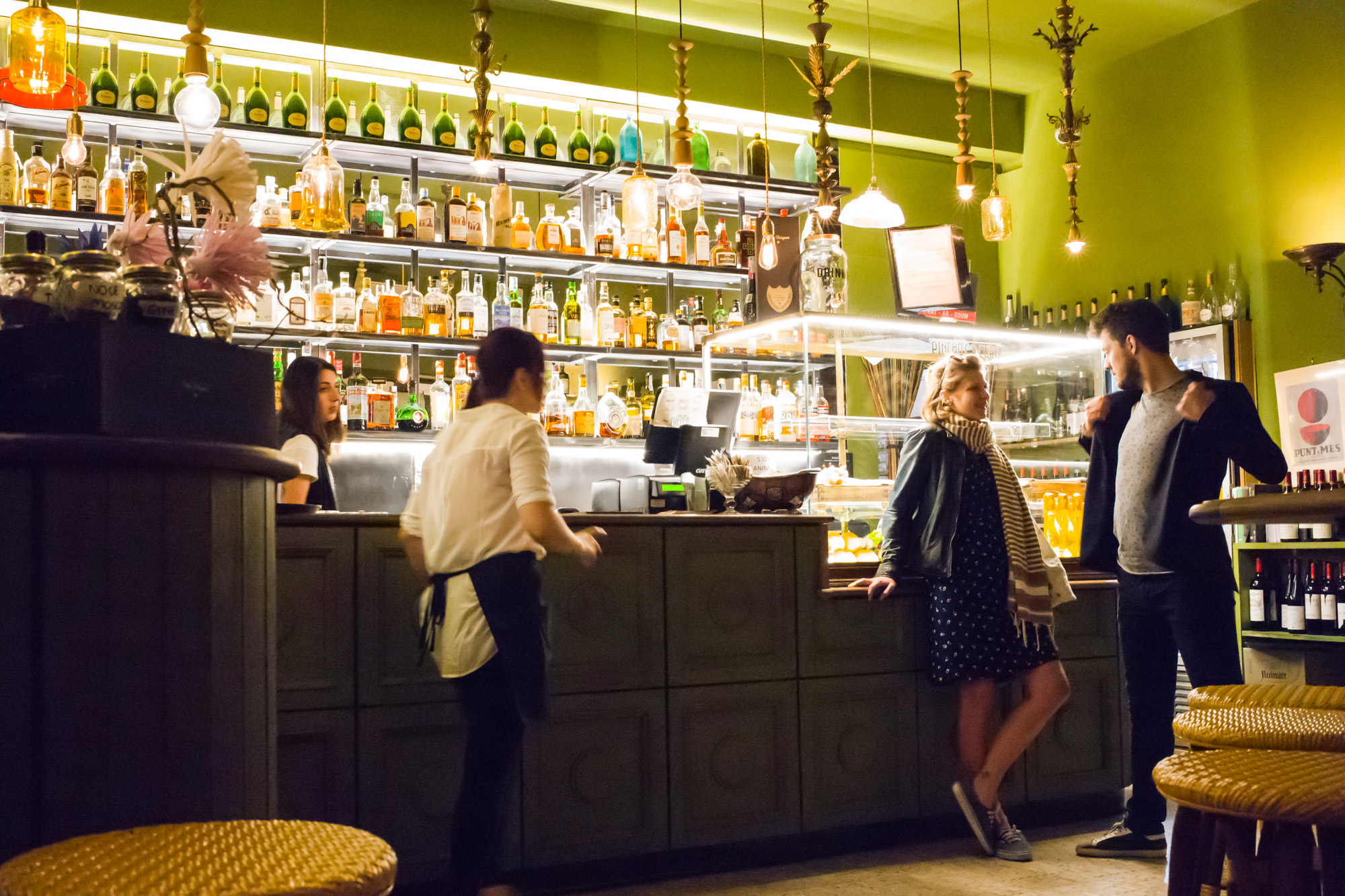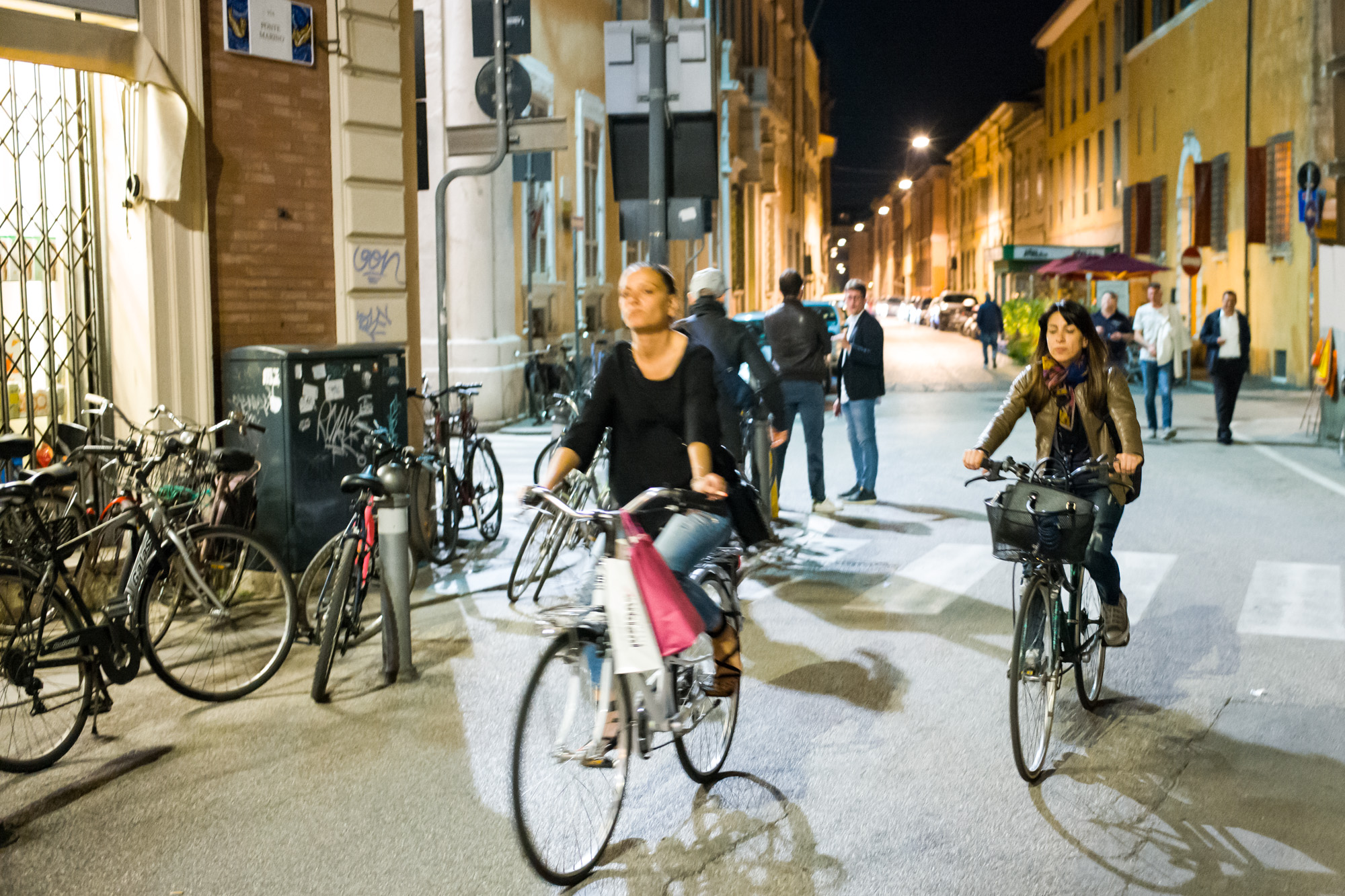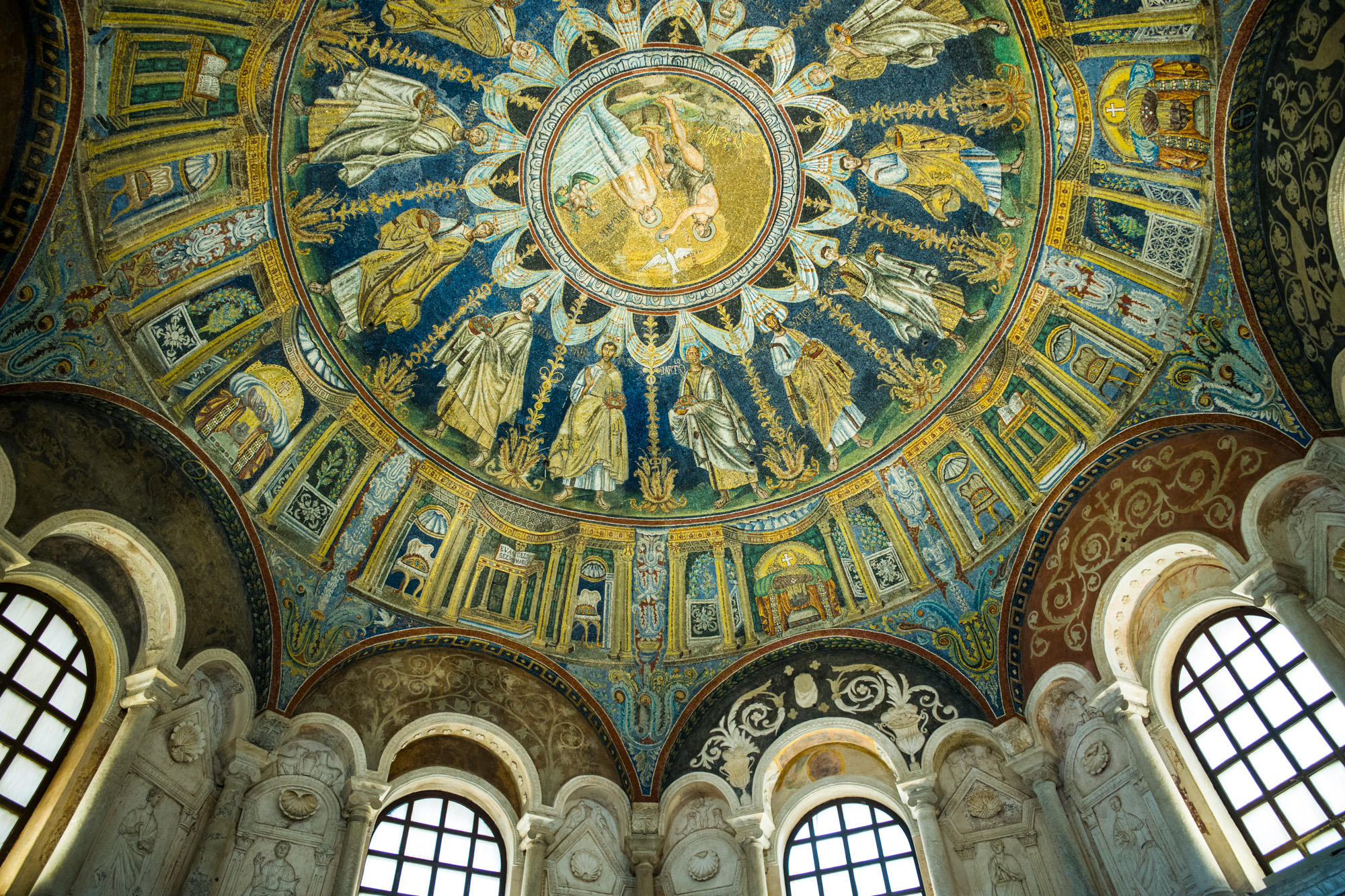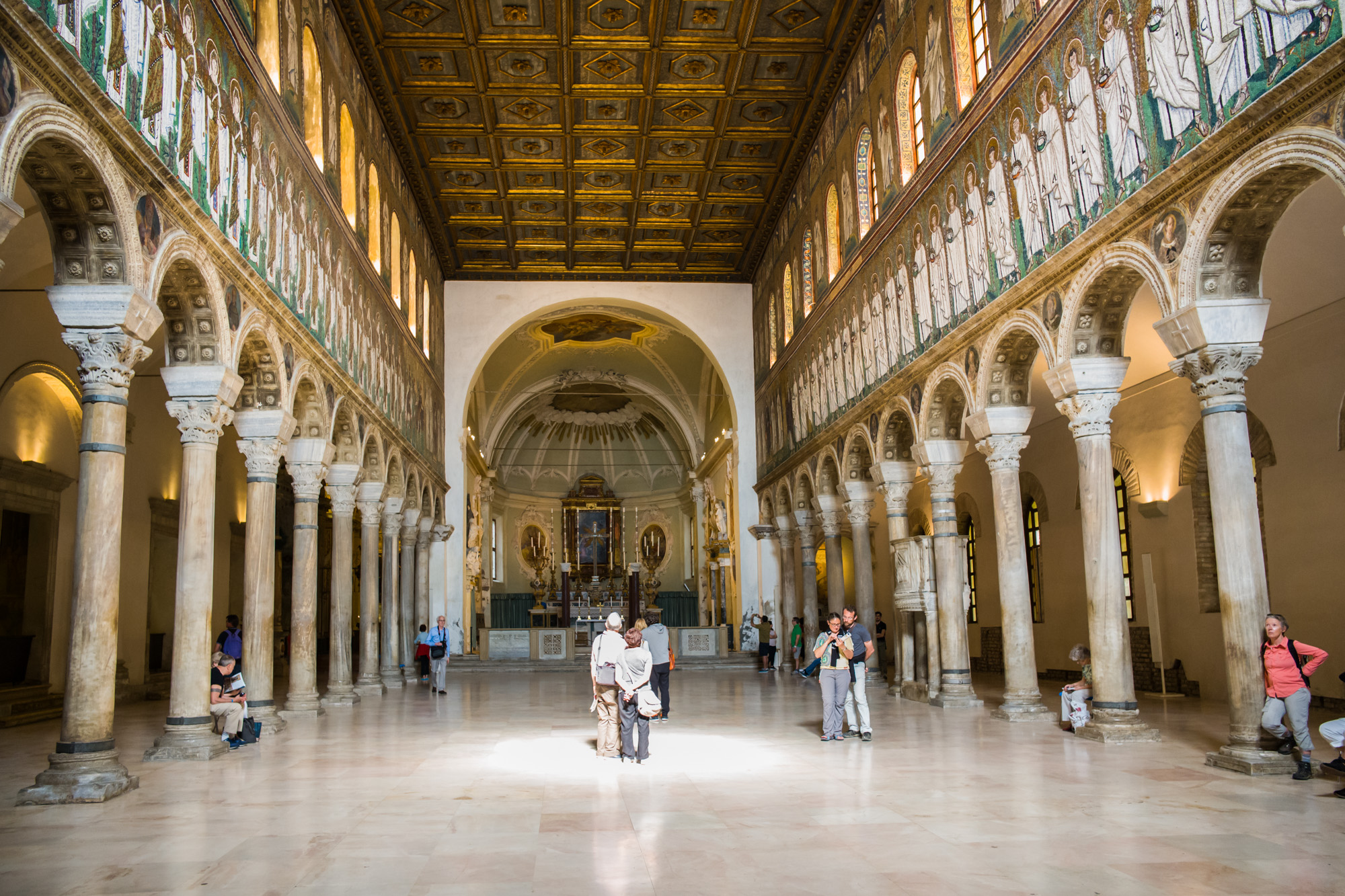Ravenna Italy
“O lone Ravenna! many a tale is told. Of thy great glories in the days of old:
Two thousand years have passed since thou didst see Ceasar ride forth to royal victory. ”
On the streets of Ravenna
Why visit Ravenna?
Many historians and lovers of mosaic art regard Ravenna as a leading light during Europe’s Dark Age. The city hosts the most impressive collection of Byzantine mosaics outside of Istanbul. Ravenna's early Christian churches and mosaics are designated a World Heritage Site. The city was briefly the capital of Western Rome during its fall and was taken by the barbarians. In 540, Emperor Justinian built Ravenna into the western pillar of the Byzantine Empire. Two hundred years later, the Lombards expelled the Byzantines and Ravenna practically vanished from history for a thousand years.
Today, Ravenna is mostly off the tourist track. However, Ravenna is a comfortable and friendly city without the tourist hordes. Beautiful women in short skirts and high heels stroll the marble cobbles while their dogs strut in pink tutus. A visit to Ravenna is a chance to experience Italy at a slower pace.
Gaze face to face with the Emperor Justinian in this mosaic of gold and jewels.
Fortunately, Ravenna is not a port of call for cruise ships or fleets of tour busses. The majority of visitors are Italian. When you enter one of the world’s oldest churches, you have the luxury to enjoy the ancient mosaics at your own pace. When you visit at a cafe, you are surrounded by locals and can stay as long as you like.
But there is more to Ravenna than experiencing the casual joys of everyday Italian life. Since Ravenna’s history goes back 20 centuries, you can literally peer into humanity’s past and look upon the countenance of greatness.
During the 1st century Emperor Augustus built a vital port and naval base in nearby Classe. Amidst the turbulent fall of the Roman Empire, Ravenna transformed into the capital city for 3 ancient empires. 1) When the Gauls sacked Rome, the Romans moved the capital from Rome to Ravenna in 402 CE. Even though the capital moved, the Barbarians (Gauls, Goths, Vandals, Huns) continued to pick apart the Roman Empire. 2) In 476 the Barbarians and Theodoric, King of the Ostrogoths declared Ravenna his capital city. Remnants of the Roman Empire still lived in Constantinople (as the Byzantine Empire) and they wanted Ravenna back. 3) The Byzantines finally reclaimed the city in 540, making Ravenna the western capital city for the Byzantine Empire during the reign of Justinian. And regardless of who ruled, each of the 3 empires created art to celebrate their dominance.
If you are a history buff, staying in the old town makes it easy to walk to the major historical sites as well as shops and restaurants. Tip - Parking is difficult and expensive.
What to Do
Mosaic Art
Mosaic is “the art of creating images with an assemblage of small pieces of colored glass, stone, or other materials.” When viewing these masterpieces many people are humbled by the realization of the effort required and others are dumbstruck by their beauty as light reflects on the individual pieces. Moving (even slightly) alters the light on each piece and causes the image to shimmer. The faces are emotive.
These ancient mosaics were created to communicate culture’s most important ideas to an illiterate population. These are stories of redemption, hope and order. The mosaics of Ravenna allow you to experience how Christianity was carefully woven into everyday life. Today, visitors gaze upon them and perhaps feel some of the emotions of the people who viewed them hundreds of years ago.
In San Vitale, Jesus sits atop a blue orb dressed in the emperor’s royal purple looking down with a compassionate face. There is no agony of the crucifixion in this image of Christ, only calming wisdom.
Mosaics in the Basilica di San Vitale
The Mausoleum of Galla Placidia
Khan Academy Video of The Mausoleum of Galla Placidia, 425 C.E., Ravenna, Italy Speakers: Dr. Beth Harris and Dr. Steven Zucker. Created by Beth Harris and Steven Zucker.
Without doubt, Empress Galla Placidia (390-450CE) is one of the world’s most powerful women. She was the daughter of an emperor ( Theodosius I), the granddaughter of an emperor (Valentinian I), sister to 2 emperors (Arcadius and Honorius) as well as mother to daughter, Honoria, who became Queen to Goth King Ataulf. (Honoria also proposed marriage to Attila the Hun.) In addition, Galla Placidia served as Regent to her son, Emperor Valentinian III, until he assumed the throne. And, of course, the Empress continued to work behind the scenes until her death.
The Mausoleum of Galla Placidia honors her life. From the outside the building appears humble and nondescript. But the interior is intimate and alive with shimmering precious stones and gold.
The mosaics here are some of the world’s oldest and were created when Christianity was very young. Elements of pagan religion were integrated with Christianity in the iconography of these mosaics.
The Mosaics of the Mausoleum of Galla Placidia. The sun’s light shines through windows of cut stone.
San Vitale
The Mosaics in the church of San Vitale
Khan Academy Video of San Vitale, one of the most important surviving examples of Byzantine architecture and mosaic work. It was begun in 526 or 527 under Ostrogothic rule. It was consecrated in 547 and completed soon after. Speakers: Dr. Beth Harris, Dr. Steven Zucker. Created by Beth Harris and Steven Zucker.
San Vitale is widely considered to contain the most impressive and beautiful mosaics in the city. The construction of San Vitale began in 526, making this one of the oldest churches in the world. The building is in the shape of an octagon. Delicate stacked columns suspend a second story high above so naturally your gaze drifts upward to the painted ceiling. The walls and ceiling above the altar are covered in dense, colorful, beautiful mosaics. The largest depicts a young Christ dressed in the royal purple robes of an emperor. He sits upon a blue orb that appears to be the earth. (Perhaps the Byzantines knew the earth was a globe.) Unfortunately, photos do not capture to the beauty of the interior.
Power Couple- Justinian and Theodora
Mosaics of emperor Justinian and empress Theodora adorn the side walls above the altar. Justinian and Theodora are regarded as amongst the greatest rulers of the Byzantine Empire. And their accomplishments still live today. The foundations of modern law originated with the Justinian Code and Justinian is credited with instigating the beautiful Hagia Sophia in Istanbul (Constantinople). Theodora and Justinian were really co-rulers and these mosaics depict them as equals dressed in royal purple wearing halos of divine power. Even their shoes scream royalty!
The Emperor Justinian in San Vitale
The Empress Theodora in San Vitale
Theodora
Theodora is one of the world’s greatest rags to riches stories. She was born to a poor, humble family and became an actress (which was a very low prestige position). However Theodora rose above her lowly station and earned the love and attention of the emperor. Justinian broke many social norms when he married Theodora. Their love and devotion to each other is legendary and they were one of the world’s greatest power couples. Justinian showered Theodora with respect and she wielded power equal to his own. The 2 San Vitale panels above are evidence of this because they are equal in size as well as the same number of assistants for the emperor as well as the empress.
Perhaps the best example of Theodora’s power is her speech to Justinian. She persuaded her husband to stand up to the rioting mobs after a chariot race when the people took to the streets. Justinian and his court were fearful and about to flee. However, Theodora told Justinian and his counselors to stand their ground, “My lords, the present occasion is too serious to allow me to follow the convention that a woman should not speak in a man’s council. Those whose interests are threatened by extreme danger should think only of the wisest course of action, not of conventions. In my opinion, flight is not the right course, even if it should bring us to safety. It is impossible for a person, having been born into this world, not to die; but for one who has reigned it is intolerable to be a fugitive. May I never be deprived of this purple robe, and may I never see the day when those who meet me do not call me empress. If you wish to save yourself, my lord, there is no difficulty. We are rich; over there is the sea, and yonder are the ships. Yet reflect for a moment whether, when you have once escaped to a place of security, you would not gladly exchange such safety for death. As for me, I agree with the adage that the royal purple is the noblest shroud.”
The Baptistry of Neon
A baptistery is a sacred place to perform baptisms. An ornate pool in the center of the building is where the baptism is performed. This baptistery was built by the bishop Neon in about 500. The Baptistry of Neon is modest on the outside but breathtaking on the inside. The walls and ceilings are totally covered with beautiful mosaics and sculpted marble.
Mosaics adorning the dome ceiling of the Baptistry of Neon. Sculpted marble and arched windows supporting the dome.
The baptism of Christ at the top of the baptistry
At the top center of the baptistery is a beautiful mosaic depicting the baptism of Jesus.
Inside the building exquisite detail covers every square inch. Sculptures emerge from lifeless marble. Columns are topped with intricate carvings that flow into the mosaics.
The second important baptistry is the Arian Baptistry and was built by King Theodoric about 50 years before the Baptistry of Neon in about 490 AD.
The Arian sect of Christianity was outlawed at the Council of Nicea in 325. The key difference between Arian and Orthodox Christianity was the relationship of Christ to God. While this difference may appear trivial to modern ways of thinking, many battles were fought regarding the relationship of Christ to God.
Basilica di Sant'Apollinare Nuovo
The Basilica of Saint Apollonare Nuevo
Khan Academy Video of Sant'Apollinare in Classe, Ravenna, Italy, c. 533-49 (apse mosaic, 6th century, triumphal arch mosaics, likely c. 7th-12th centuries) Speakers: Dr. Beth Harris & Dr. Steven Zucker. Created by Beth Harris and Steven Zucker.
The Basilica di Sant'Apollinare Nuovo was originally built around 493 by King Theodoric as an Arian church and was converted to a Byzantine church during the reign of Justinian. Mosaics cover the longest walls making these mosaics some of the largest in Ravenna. Stately columns support the walls and create a large space of color, shapes, light and art.
There is a third and older Basilica di St Apollinare in Classe. This Basilica was built in the 6th century when Ravenna and Classe were separated by the harbor. This harbor is now filled with centuries of sediment and make Ravenna and Classe into a single city.
Mosaic School
After viewing so much beautiful artwork you may want to create your own at the Mosaic Art School of Ravenna. They offer 2 hour classes as well as 5 day intensives, depending on your enthusiasm and availability. The school teaches technique and sells supplies (like colored glass and tools). Using many of the same tools used by the ancient artisans, students quickly learn that cutting glass by hand is difficult and time-consuming.
Working hard at the Mosaic School
The joy of creating Mosaics
The Cafe Life
Our local cafe
Each cafe has its own style and energy. However, the coffee is always exquisite. And the food is of course, molto delizioso!
Start your day with an espresso and enjoy the evening with a glass of local wine or an Aperol Spritz. The atmosphere is friendly and relaxed regardless of the time of day. However, on Friday and Saturday nights there is more vibrant energy and interesting people watching!
Our favorite cafe was just a few steps away from our Airbnb and became our home away from home.
Explore Ravenna by Bike
Ravenna is a bike friendly city. Just about everyone rides to get around because the streets in old town were not built for cars. Amusing street art depicts some of Ravenna’s famous inhabitants like Theodora exploring Ravenna. Get around like a local!
The Empress Theodora on a bike.
A local riding past bicycle street art
Mausoleum of Theodoric
Theodoric Mausoleum
Theodoric or the Great Theodoric, was king of the Ostrogoths, ruler of Italy and regent of the Visigoths who ruled over a kingdom of Romans and Goths from 493-526. Theodoric united the Gothic tribes into a single kingdom. Ravenna was his capital.
During his reign, he created his own mausoleum of white Istrian marble. Today the Mausoleum of Theodoric stands in a grassy field not far from the center of town. It is a stark building in contrast to the beautiful Byzantine mosaics.
Chiogga
Chioggia is located across the Lagoon from Venice
If you want a change of pace, consider a 90 minute drive to Chiogga, also known as the “working man’s Venice.” Chiogga is directly across the Venetian Lagoon from the “Queen of the Adriatic.” While it has canals like Venice, you won’t find a cruise ship, tour bus or the glamour and glitter. However, you can enjoy a fantastic meal at a fraction of the cost because this fishing village provides the local seafood the Venetians enjoy.
For a glimpse of local life, take a 1 hour boat cruise around the village and through the lagoon. It is always nice to get on a boat!
The National Museum of Ravenna
Explore the Museums
The National Museum of Ravenna is located in the impressive complex of San Vitale which is a beautiful old monastery with graceful architecture. It is easy to spend several hours enjoying the walkways and gardens while viewing the art collection.
Visit the Tamo Museum. The Tamo cannot be strictly defined as a museum but rather a mosaic stronghold. It provides a fascinating journey through this ancient art and allows visitors to admire, discover, understand, experiment and literally live the whole adventure of mosaic.
The Archiepiscopal Museum is worth a visit because of the numerous preserved artifacts after the demolition of an ancient Basilica which stood on the same grounds. Don’t miss the spectacular exhibit of the ivory throne used by the Bishop Maximianus during the Byzantine era.
Italian Soap Opera- Dante’s Tomb
Dante’s tomb is in Ravenna even though the writer lived in Florence. He was exiled because his political activities were deemed offensive. Ravenna provided sanctuary. In 1519, Pope Leo X ordered the bones returned to Florence. Ravenna refused the papal order and sent an empty coffin. Today, an oil lamp burns night and day over Dante’s tomb. The olive oil comes from the Tuscan hills and is donated each year by the city of Florence on the date of Dante’s death, September 14th.
A local craftsman in the town square creating unique bracelets.
Shopping
Shopping is local and personal here. And fun.
As you walk through the town square you’ll find local craftspeople happy to make items just for you. We came across an artist in the public square creating custom leather bracelets.
Typical Ravenna transportation
Summary
If you seek an “authentic” Italian experience away from crowds of tourists you will love Ravenna. If you are passionate about history and art, you’ll love Ravenna. We certainly loved our time here.
The gallery below highlights some of what Ravenna offers.
Gallery of Images of Ravenna
